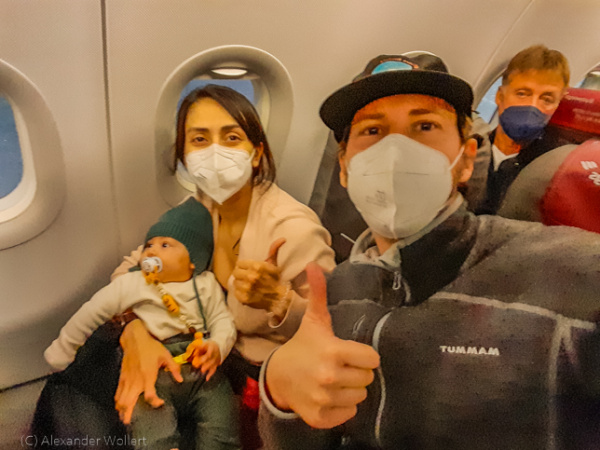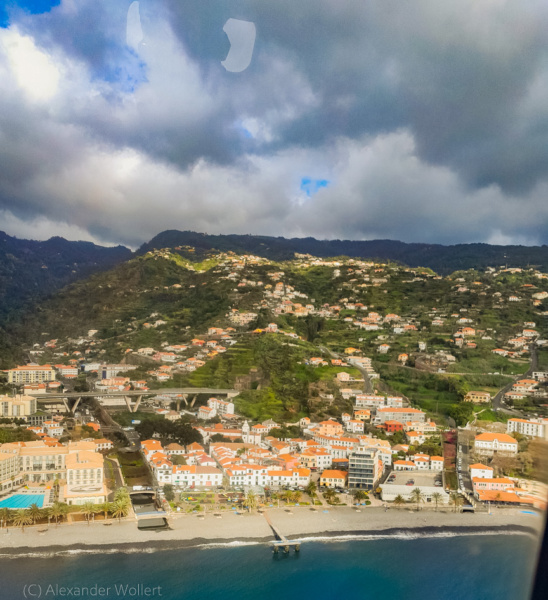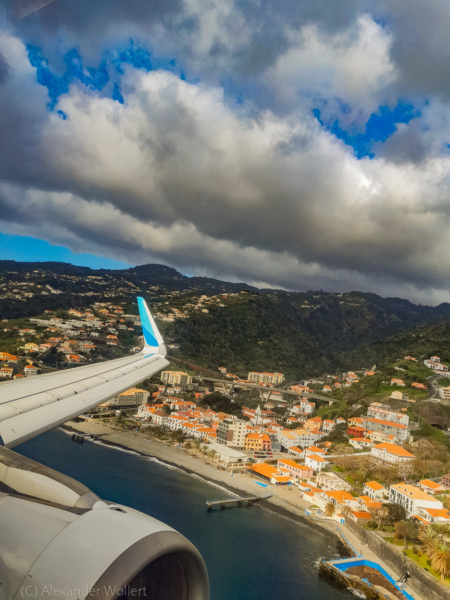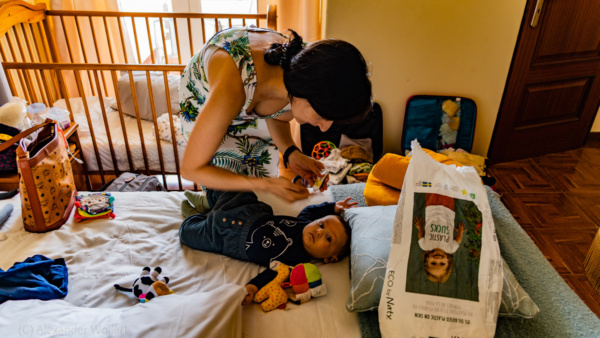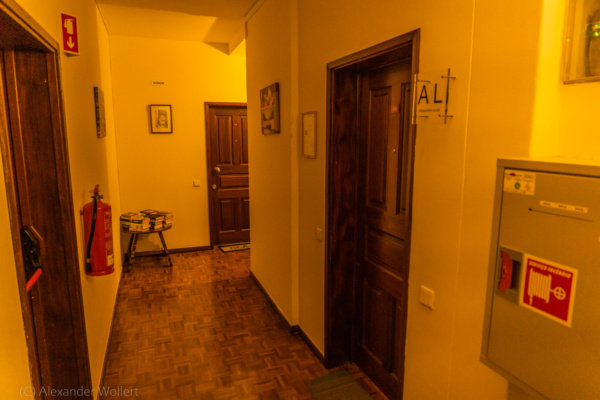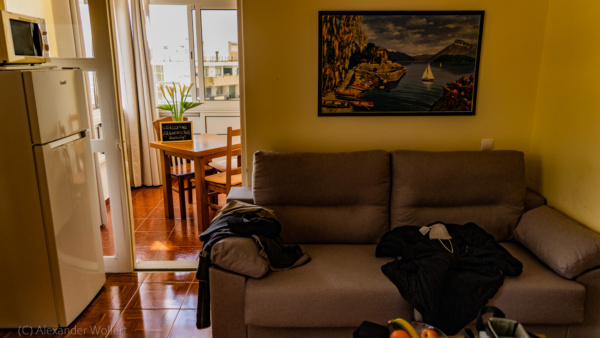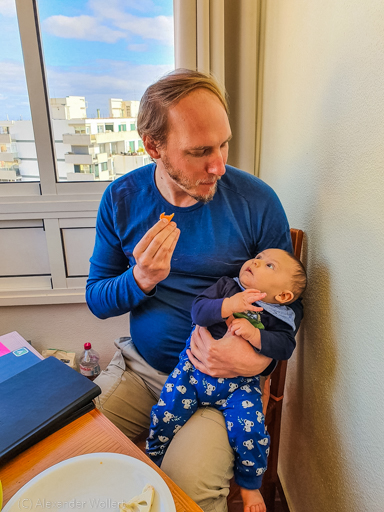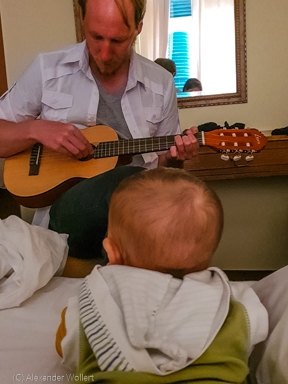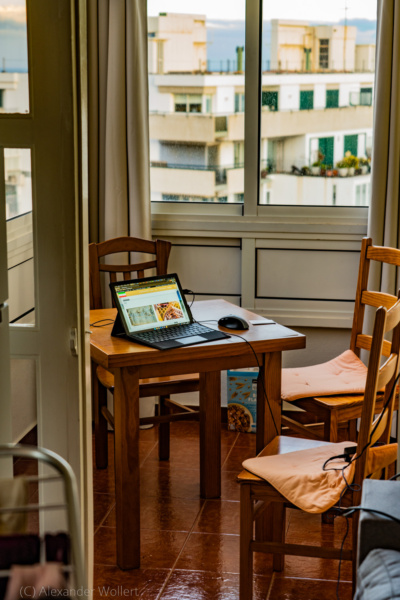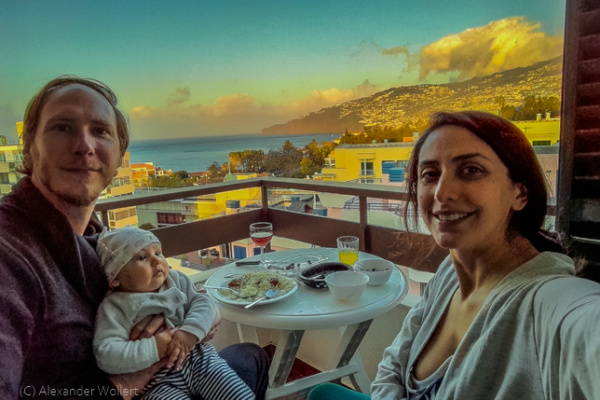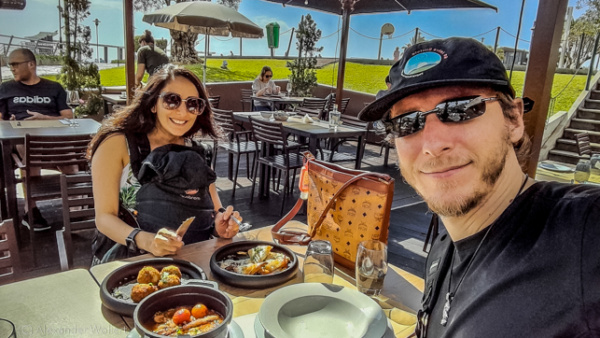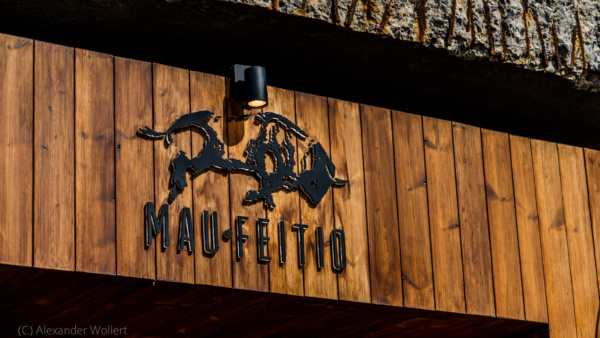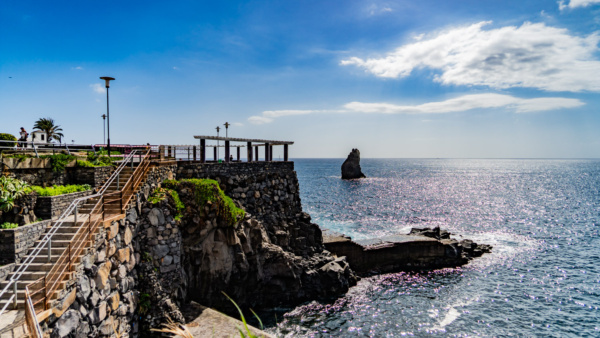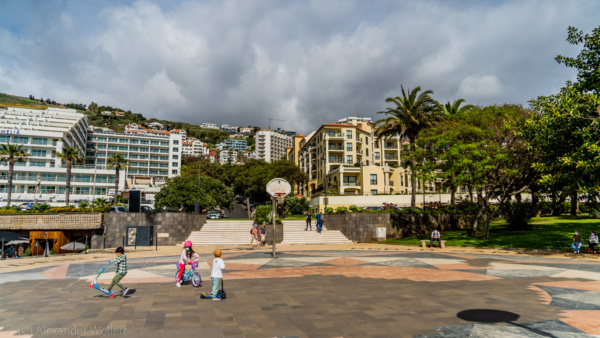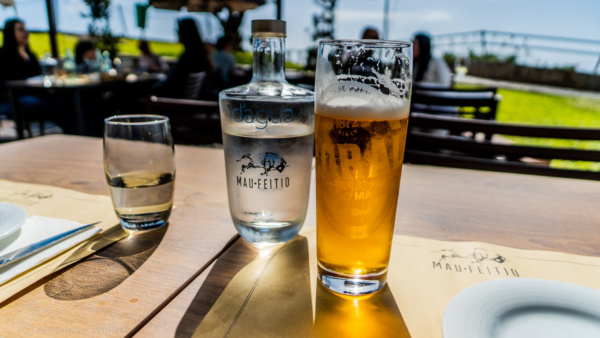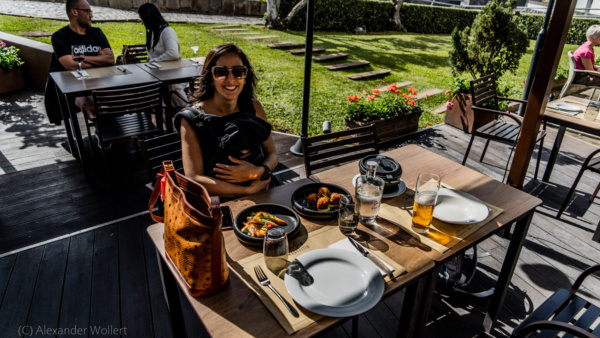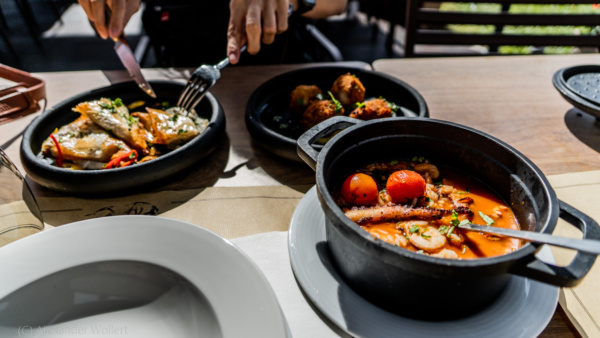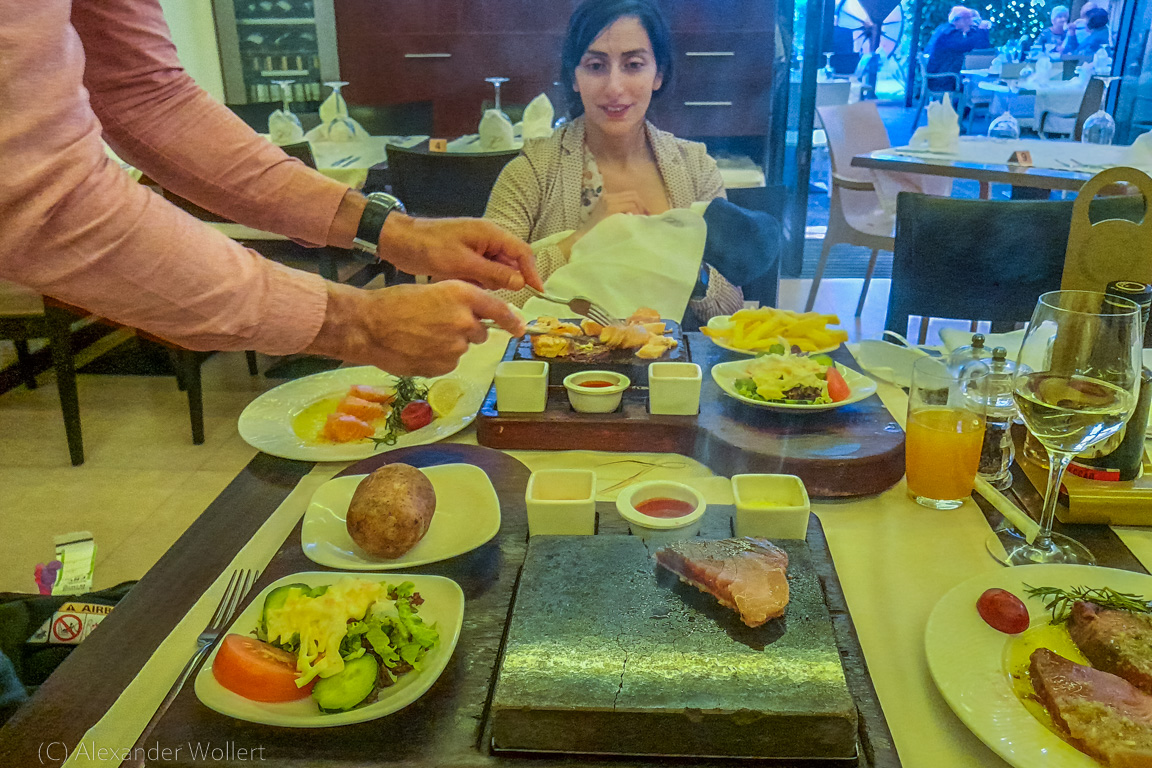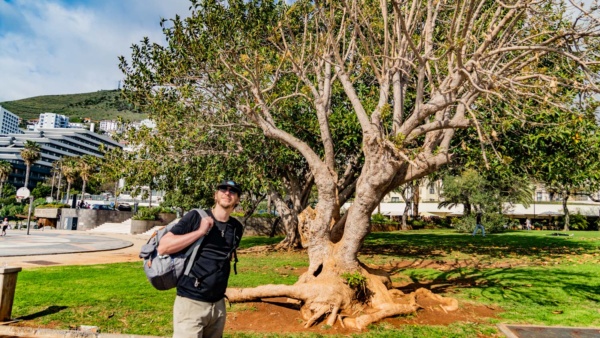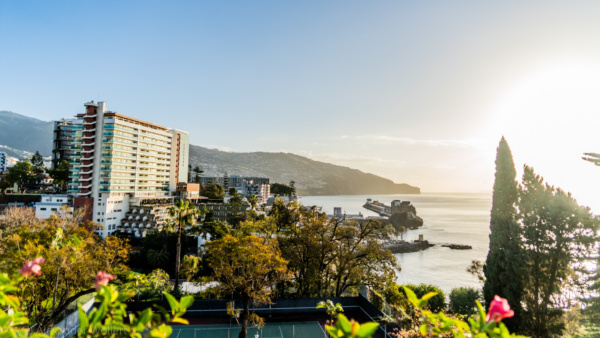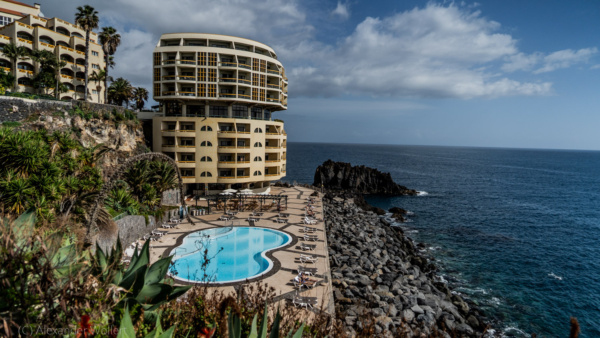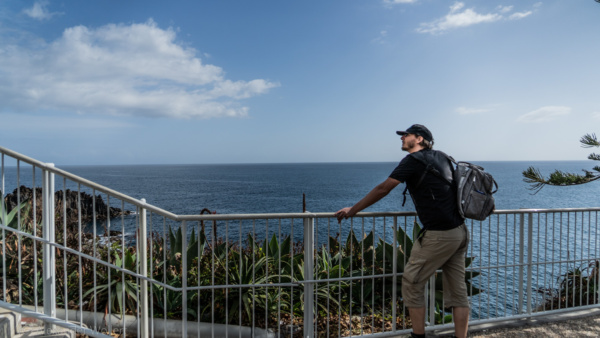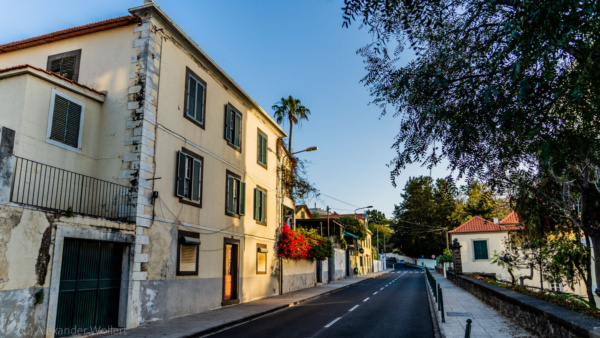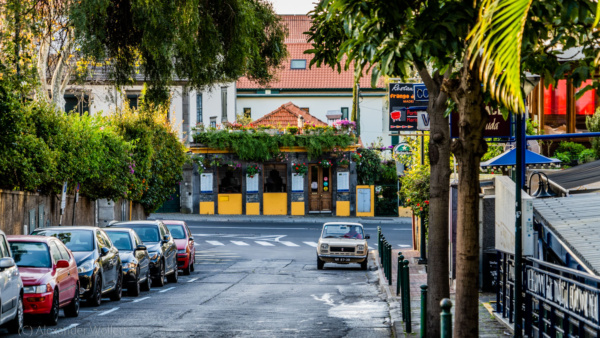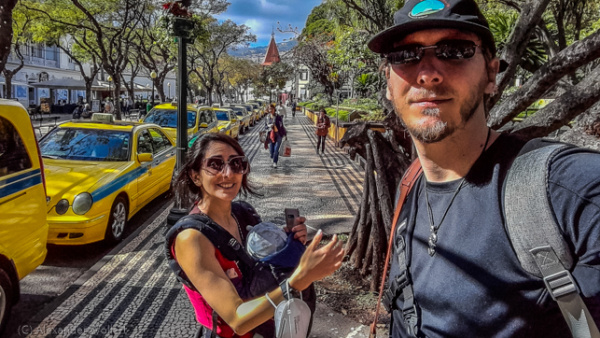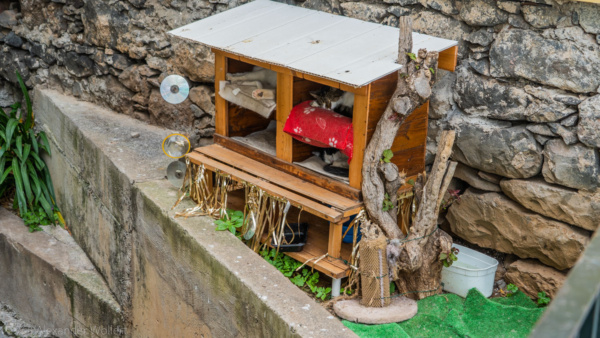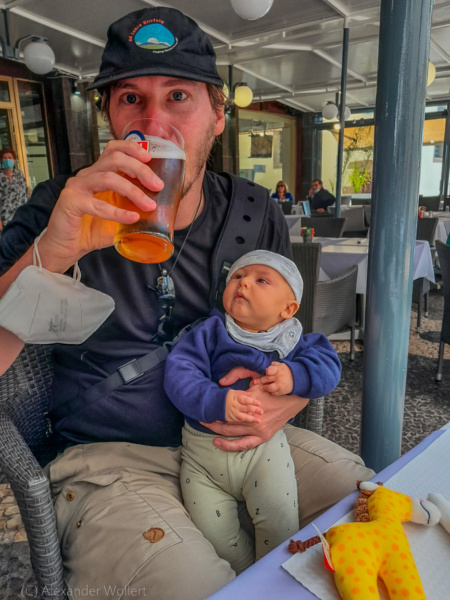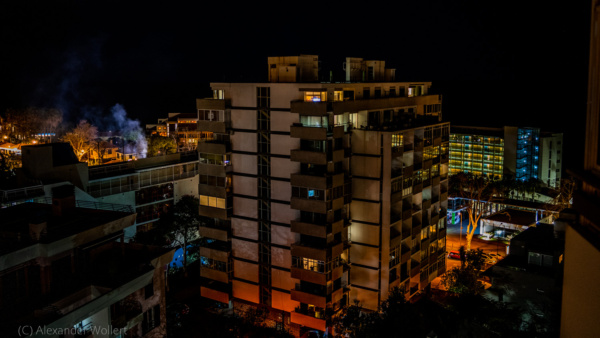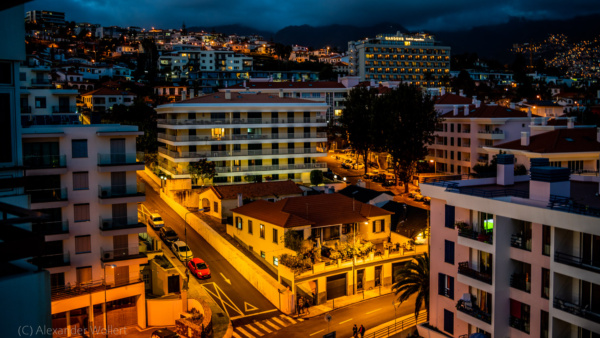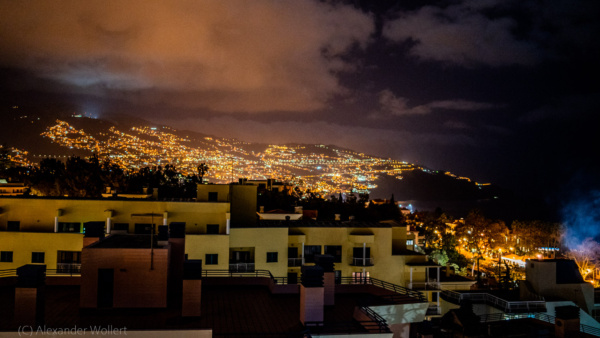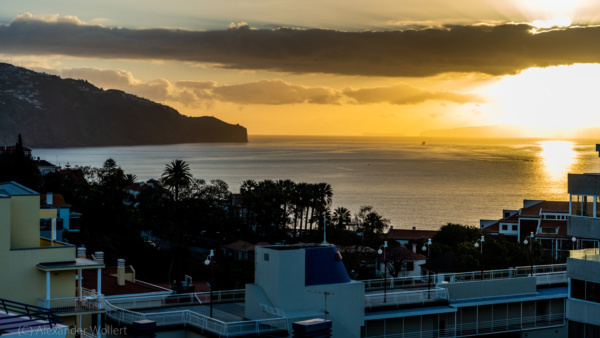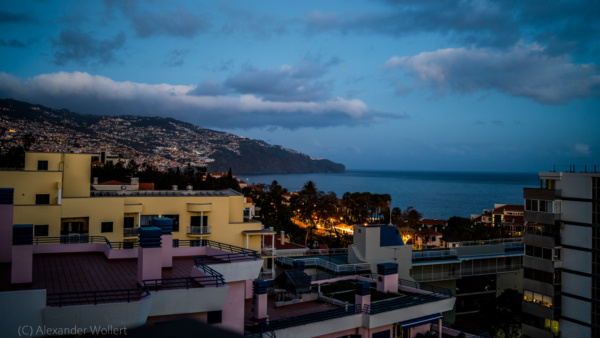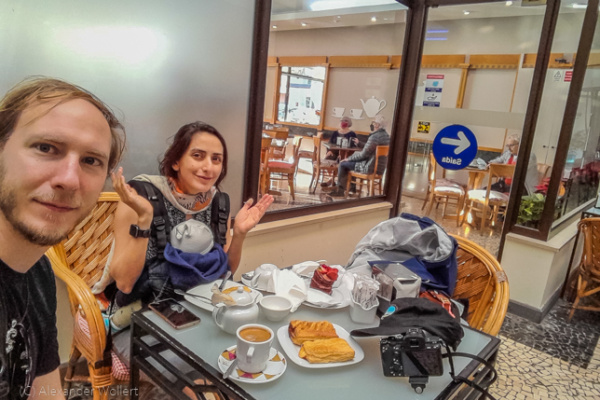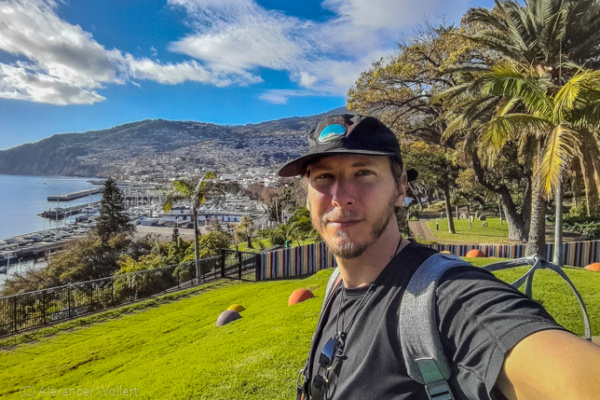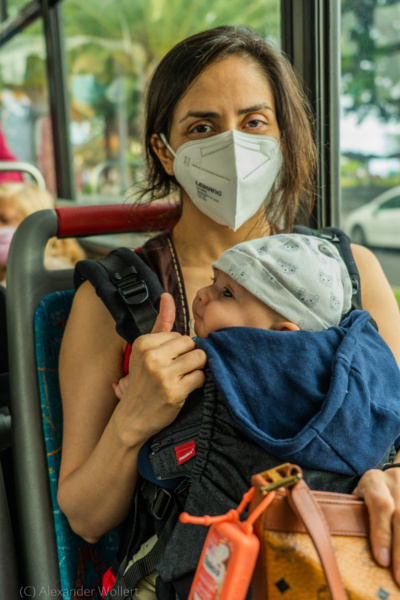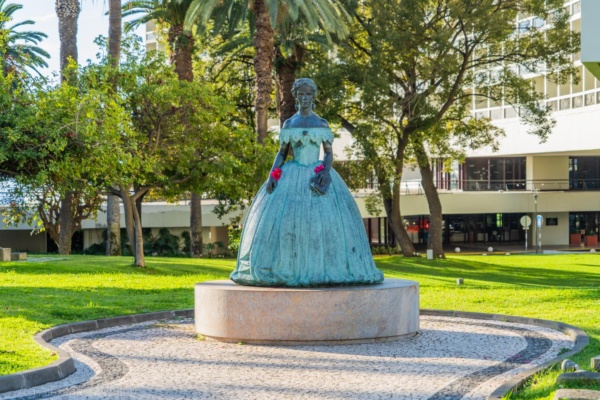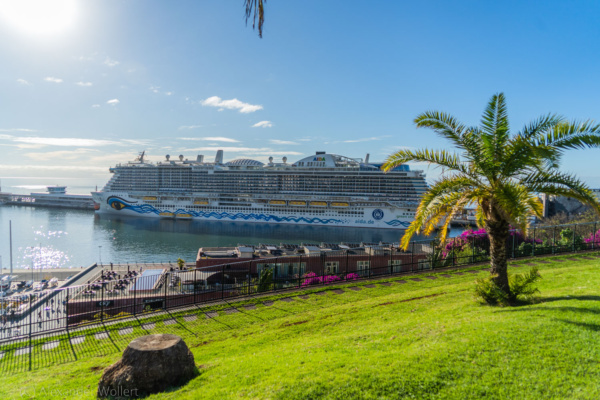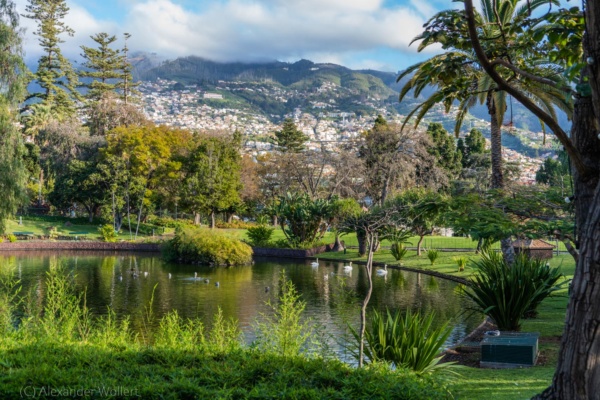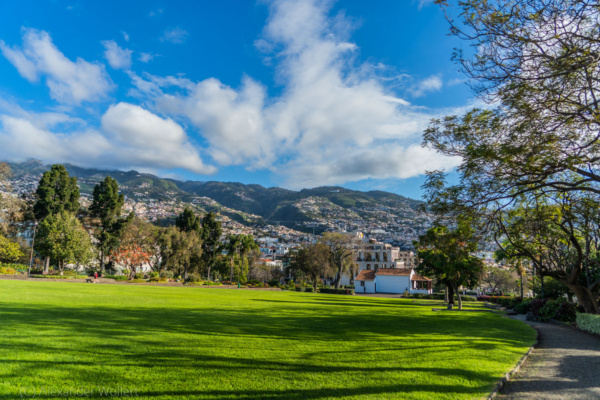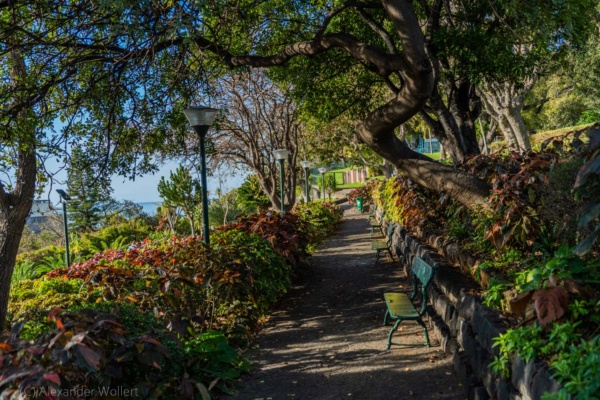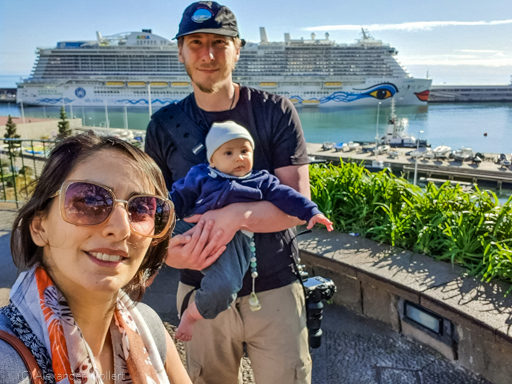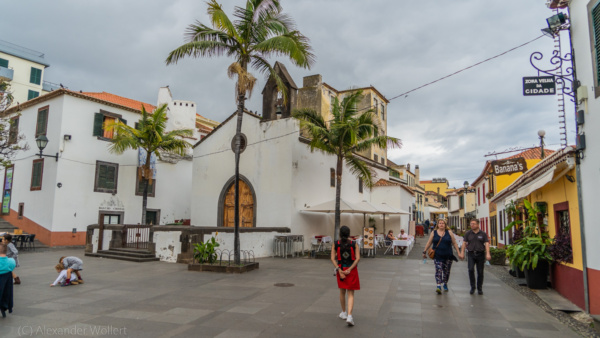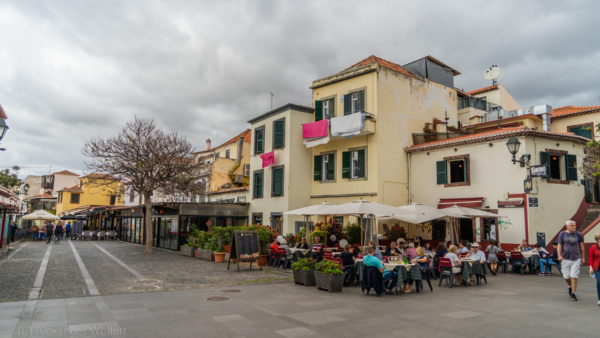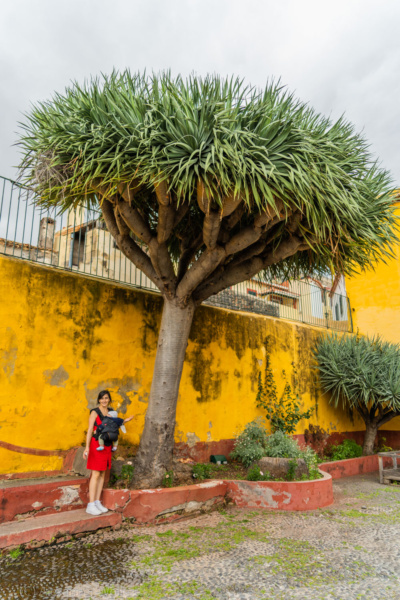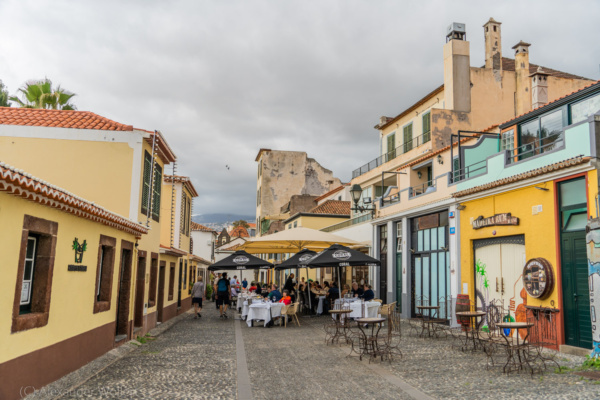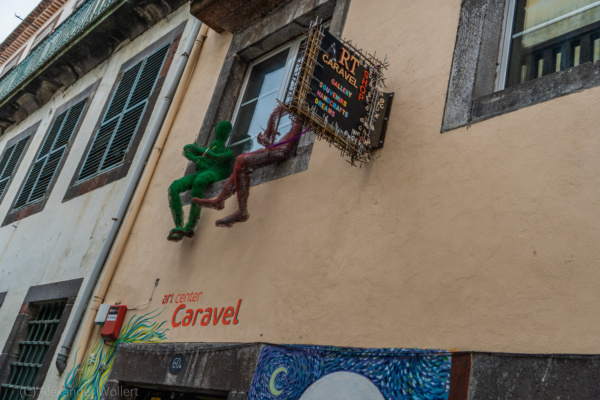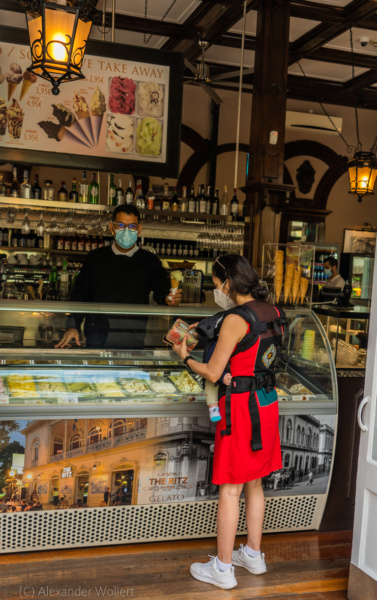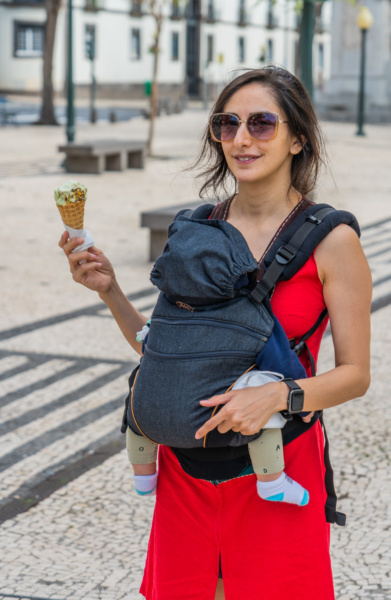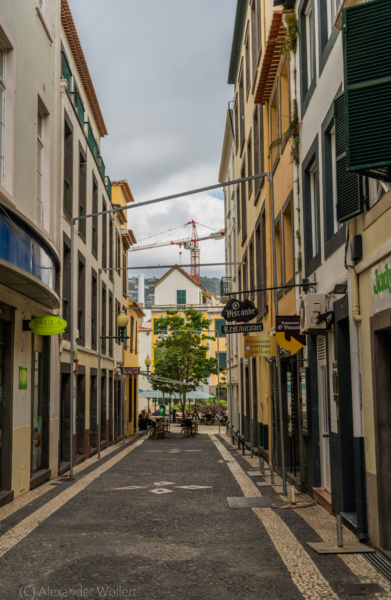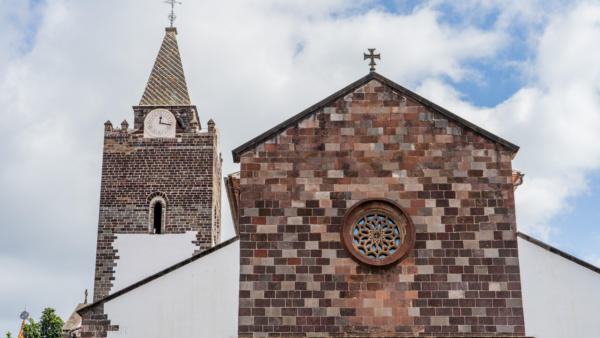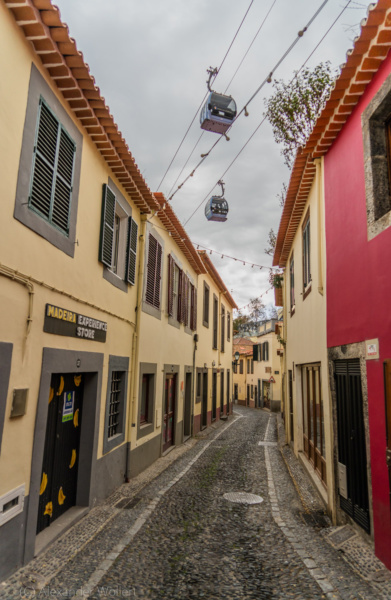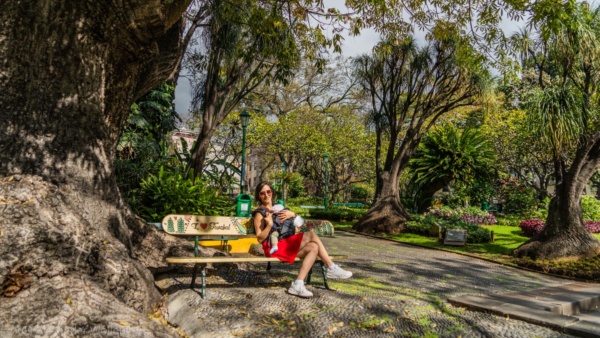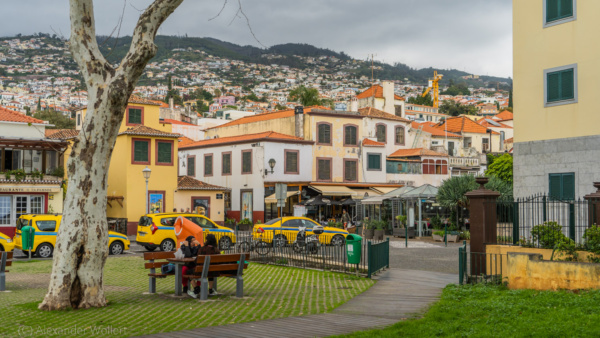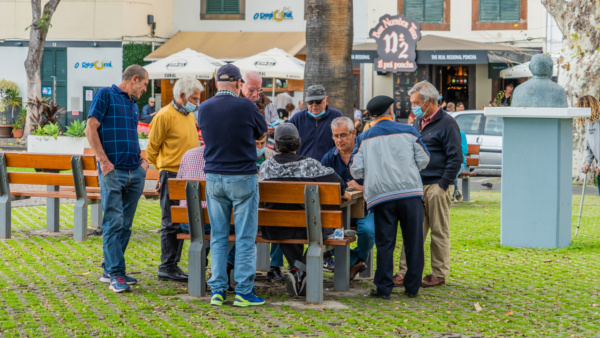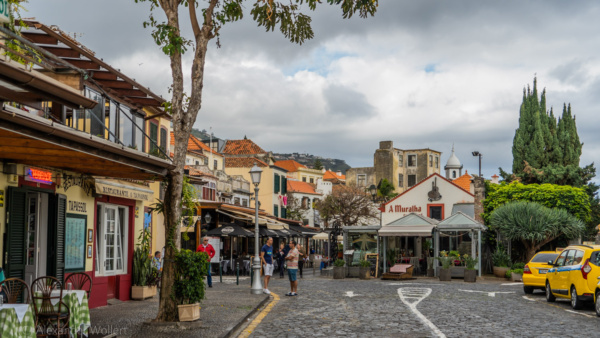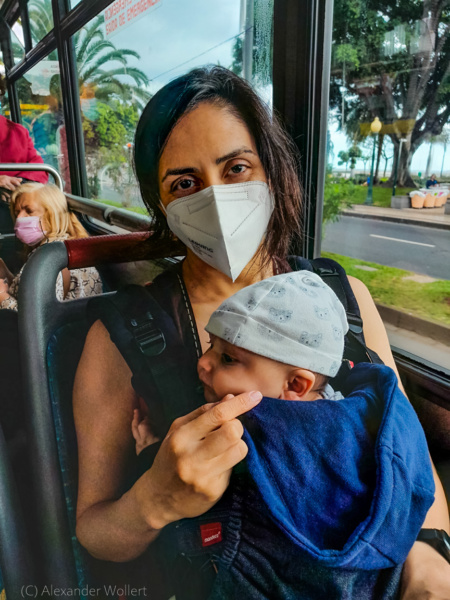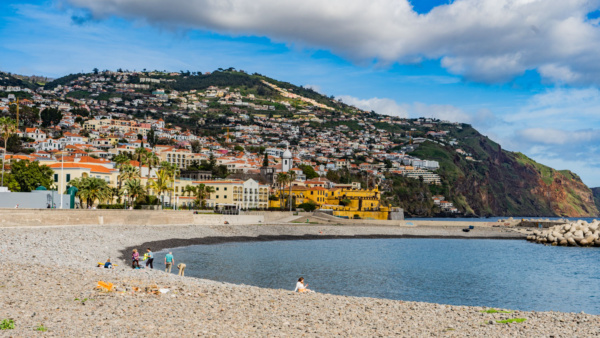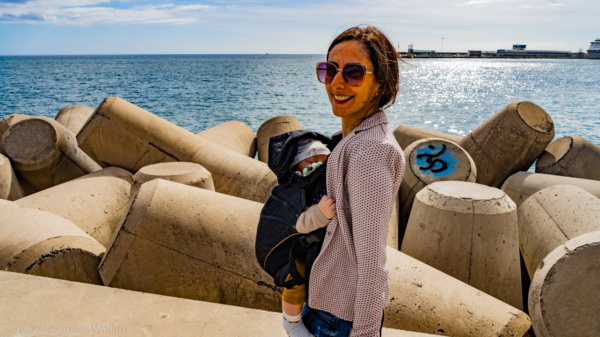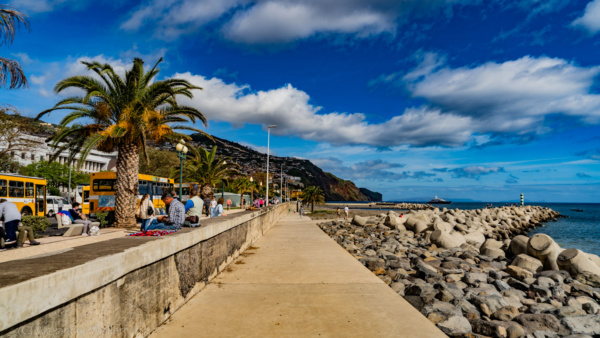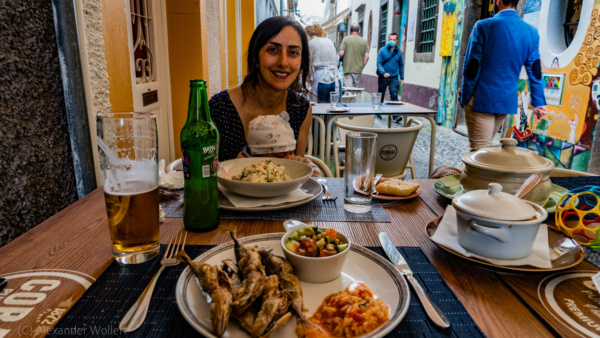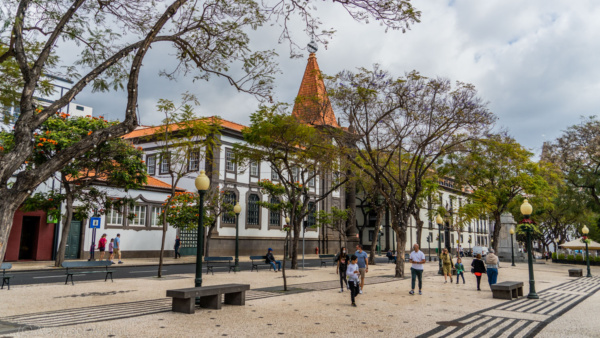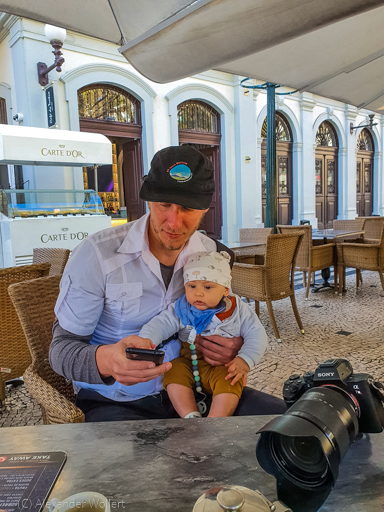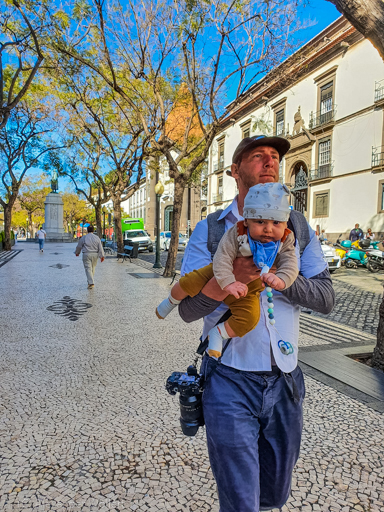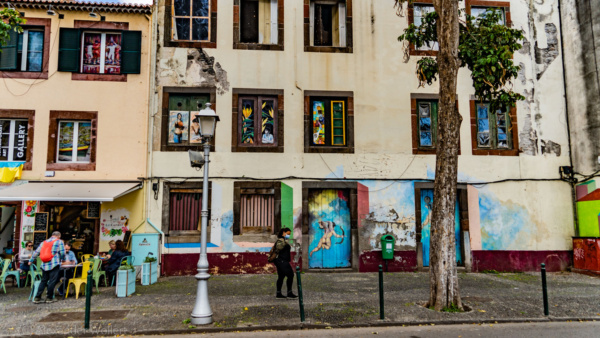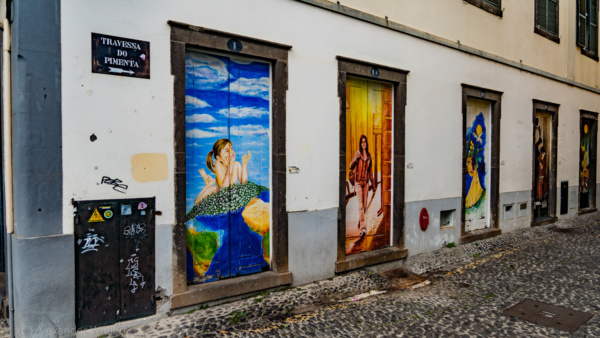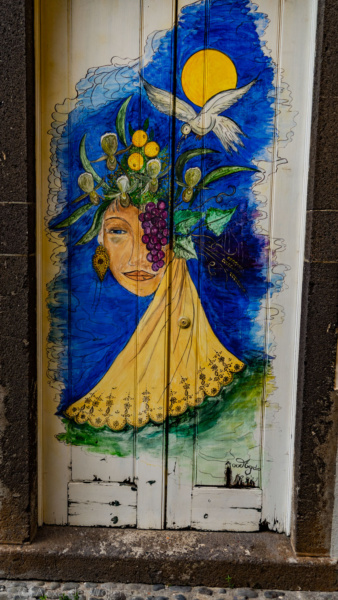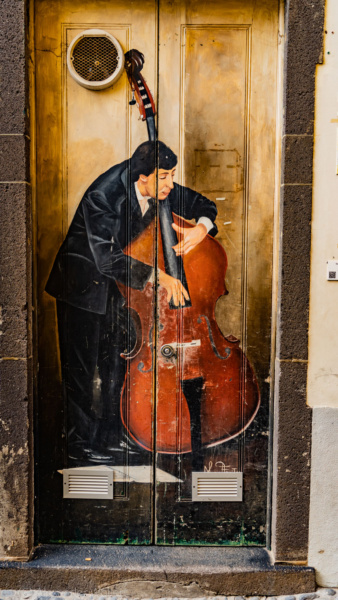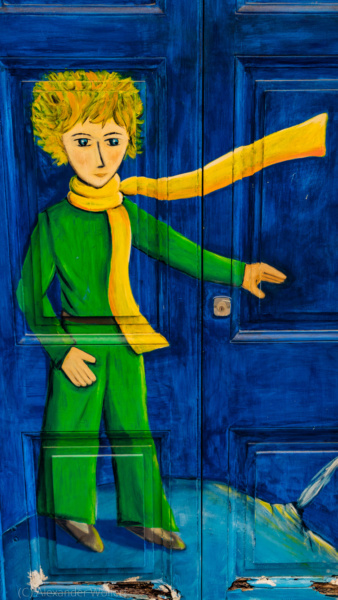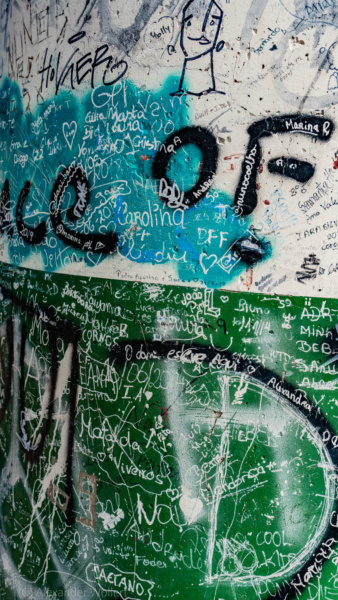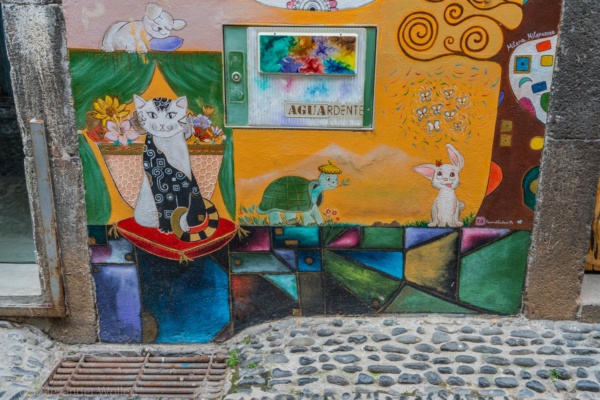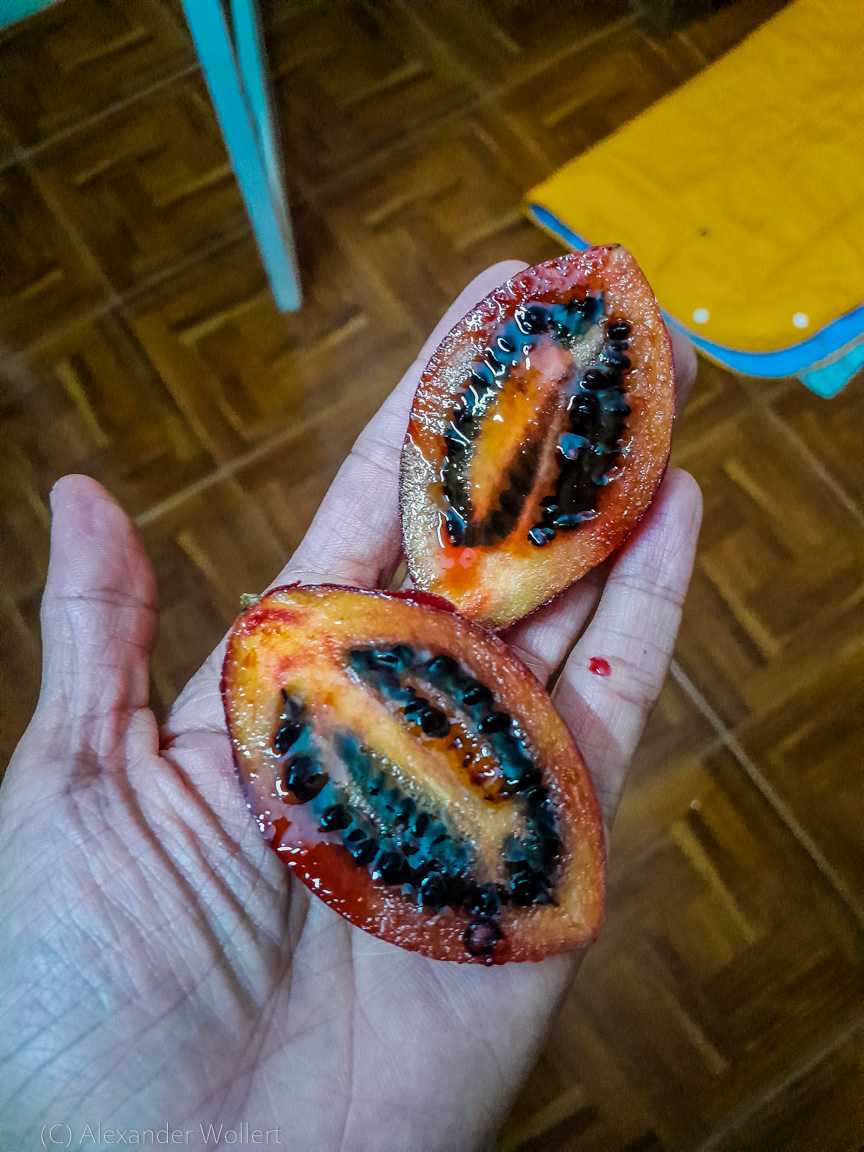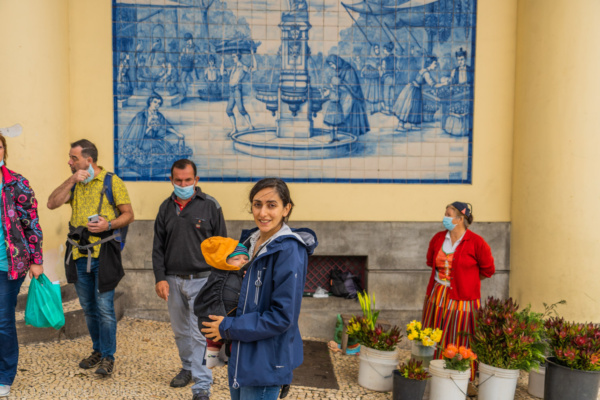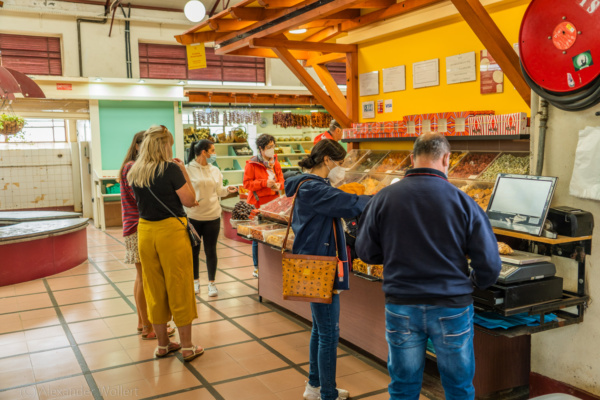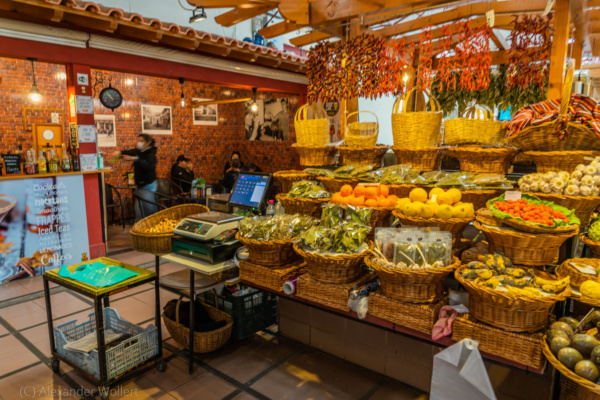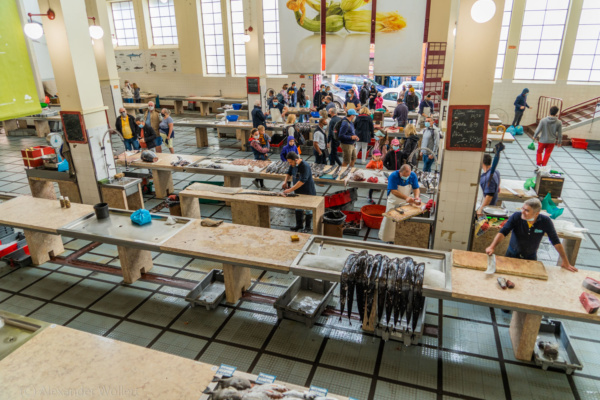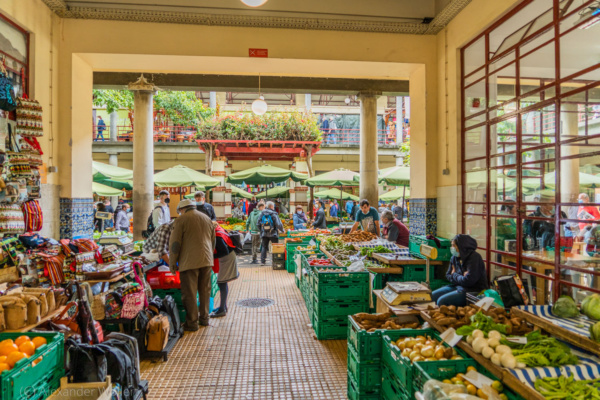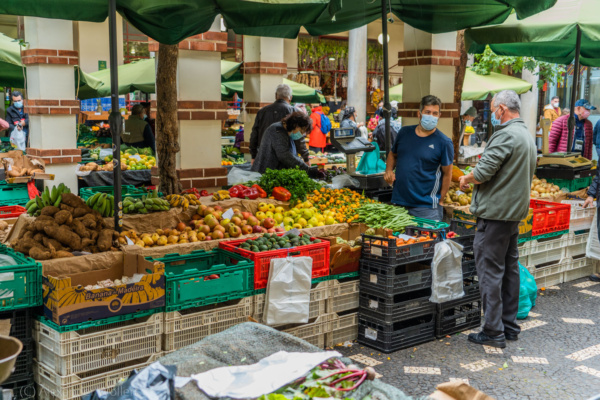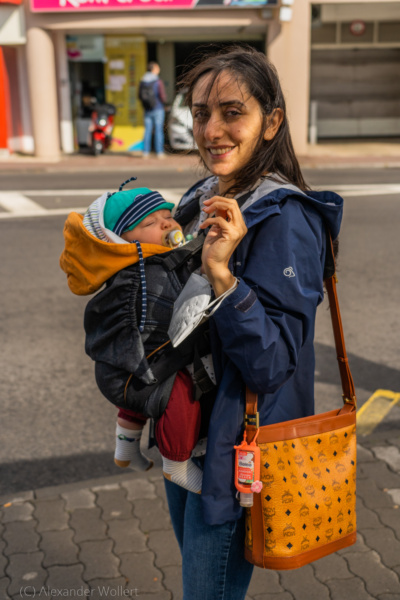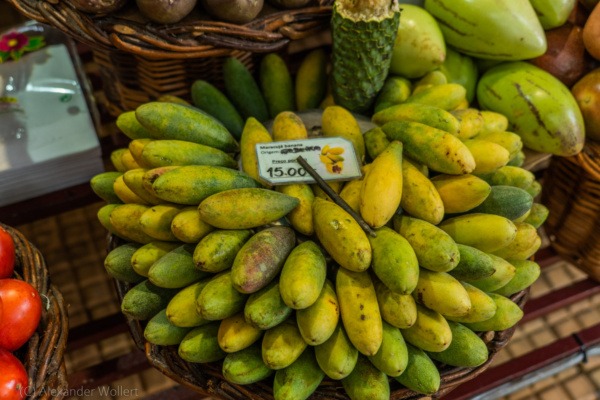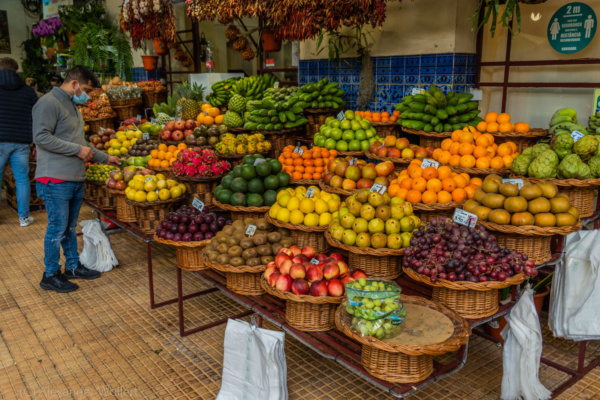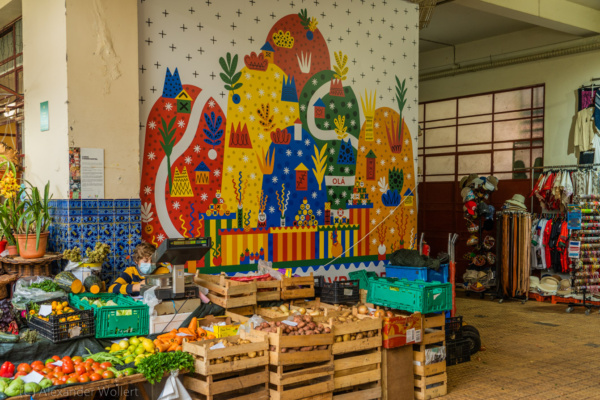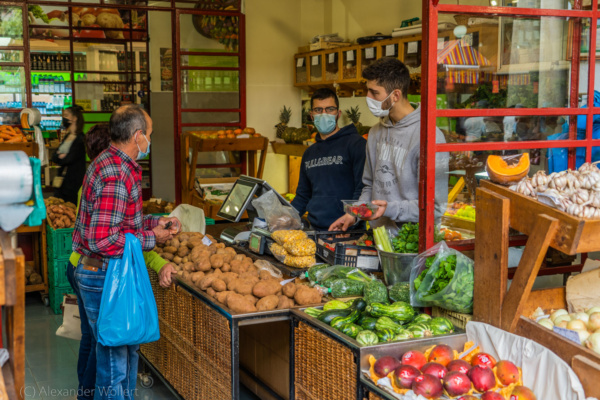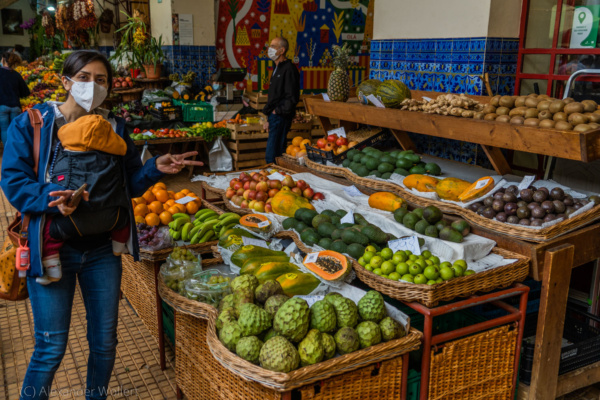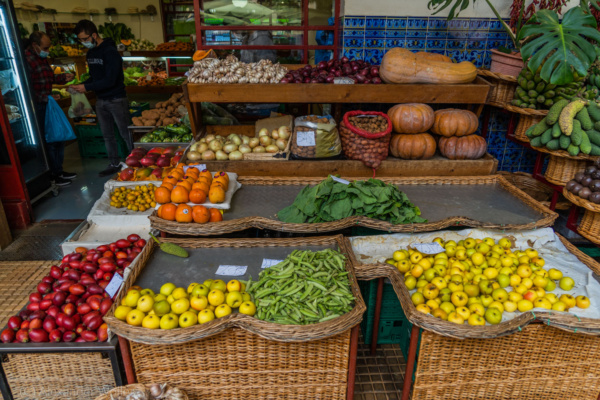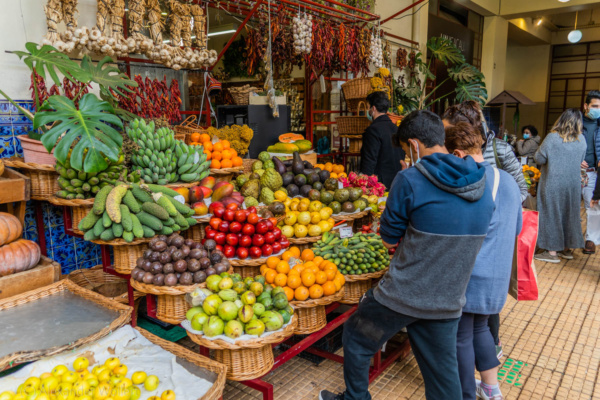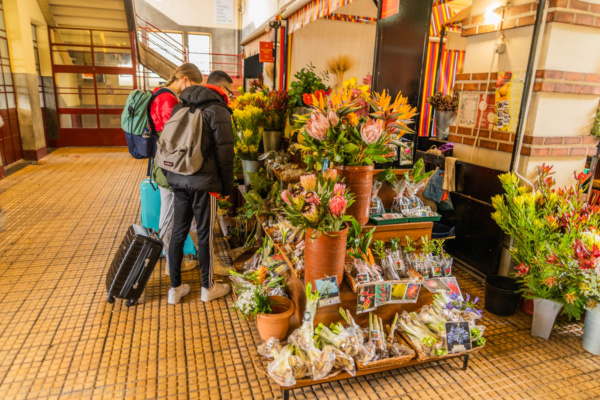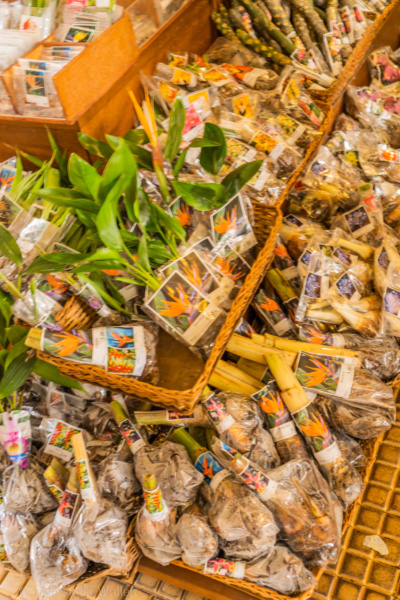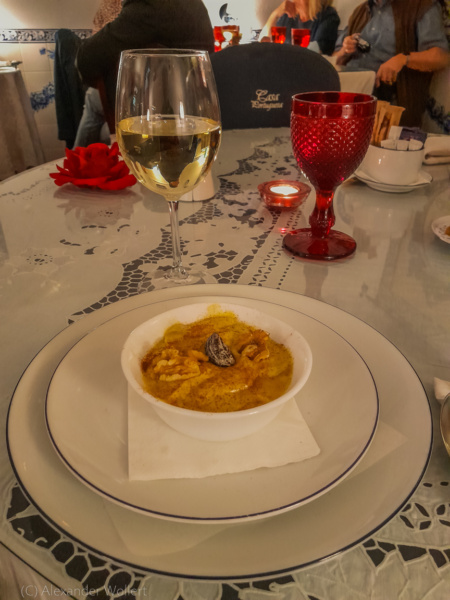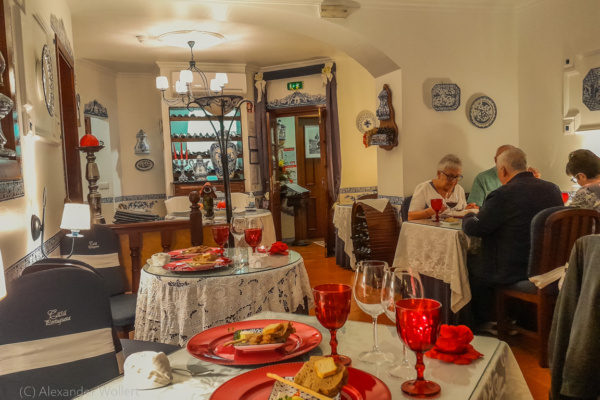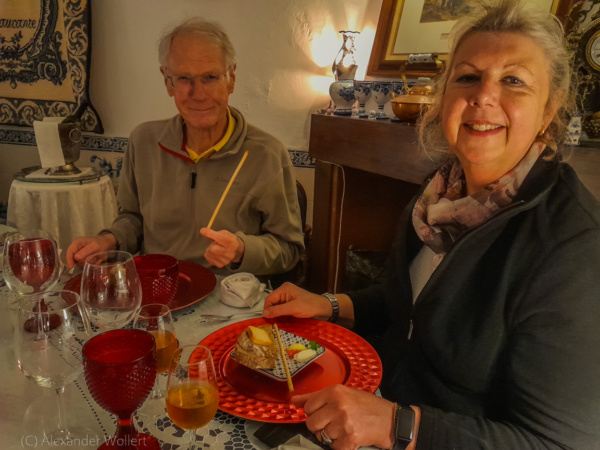Diary Entry
Traveling with a child? No problem. Even if Leon is only 4 months old – why not? The trip to Madeira takes a few detours. Since the flight leaves Stuttgart early, we check in with Sara’s friend Jörg to take us from the taxi to the airport early in the morning. There, wearing a pointed hat and barefoot, Leon melts the heart of the most stressed security officer. The baby is doing well on the journey and will not be disturbed by anything as long as it is regularly changed, fed and rocked to sleep. On the plane itself, children come and want to touch his feet. The parents are not far away and join the foot fetishism.
Flower Island airport is considered one of the most difficult in the world and pilots need special training and license to land here. The winds around the high mountains on this volcanic island in the middle of the Atlantic are fierce. We are lucky and the turbulence is limited. The machine touches down relatively gently.
Outside the airport, named after the more or less well-known soccer player Christiano Ronaldo, Roberto is waiting and driving two adults and a baby to their accommodation in a huge Mercedes Sprinter.
I have reserved a small apartment for us on the outskirts of the capital, Funchal, and there Susana is already waiting for us at the reception.
The Madeira Home
Arriving in the Lido district, we enter our living and working space for the next three weeks. The internet is fast, but we will have trouble with it in the coming weeks, because lines are being relocated right during our stay and we get access to another apartment to work from there. We also have a pool at our disposal. It’s as cold as the air at night and is a great way to wake up quickly.
But the view is great. We can see the city of Funchal all the way up to the Monte, the neighborhood that’s up the mountain. We see the bay and the harbor on the other side. There is not much shipping traffic on the sea. In the morning I can see a few fishing boats and at noon the tourist ships. Every now and then one of the regularly arriving cruise ships bids farewell with a deep blast of the horn.
gETTING TO KNOW THE lIDO nEIGHBORHOOD
The Lido district is primarily characterized by tourism. One hotel palace nestles up against the other. Despite this, it retains charm and is modern and built with style. Luckily they seem to have had a plan and not simply sold the building plot to the next best investor with plans for bare fortresses.
There are nice cafes and restaurants, sports fields and parks. You can walk along the well-groomed coast or do sports there. Since there are no sandy beaches on Madeira, you don’t miss anything. Perhaps the coast could remain largely untouched as a result.
Nevertheless, you can go swimming. In some places, locals have carved or installed stairs in the rock to access the ocean. A few people are already daring to do a lap in the Atlantic in February.
First we need to eat something local. Around the corner we find good food and the delicious local beer Coral at Mari Feira. As in Portugal, coffee culture is very important in Madeira and a bica – an espresso – is part of every meal at the end. We also see that we have the Pingo Doce supermarket within easy reach.
The cuisine is clearly Portuguese and the famous and notorious bacalhau is never missing. A few local dishes stand out, such as espada com banana: scabbard fish with banana. That makes sense, because there are plenty of both on and around the island.
Another specialty of the country is called espatada. You hang a meat or fish skewer vertically and gradually pick off the pieces.
With fish and meat, guests are also welcome to prepare their own meals. You’ll get a burning hot flat stone next to a plate of raw salmon, tuna, or beef. Then it is up to you to let these pieces sizzle on the stone at your own discretion. Sauces and side dishes are also served. Extremely delicious!
tHE wAY TO THE hARBOR
It’s the weekend and we use the time to get to know the capital. It’s a twenty minute walk to the shopping area. If you don’t have a baby or camera with you.
We follow the coast and see that there seems to be a triathlon taking place in town. People run or cycle with numbers on their chests on closed streets and rowers are also getting ready for the starting gun in the harbour.
Rich people watch the spectacle from afar on yachts and catamarans and in between, a tiny and cozy replica of the Santa Maria, the caravel with which Columbus conquered America, chugs along. There is a hustle and bustle.
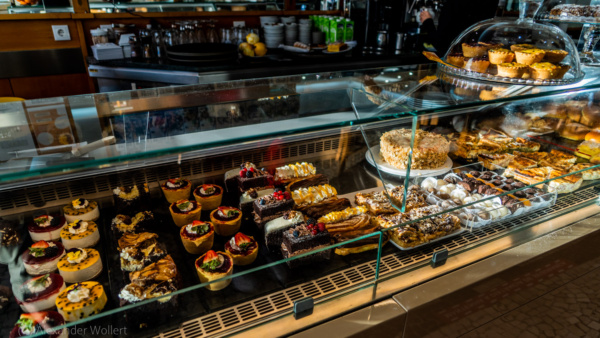

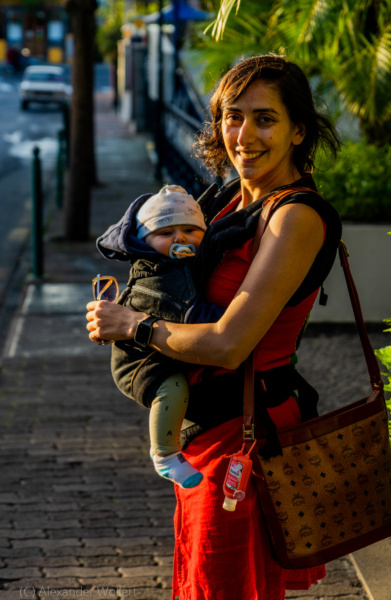
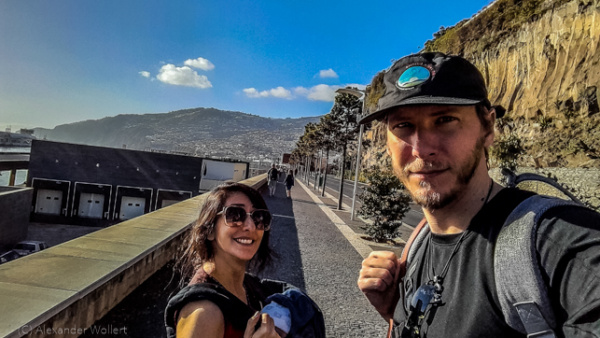
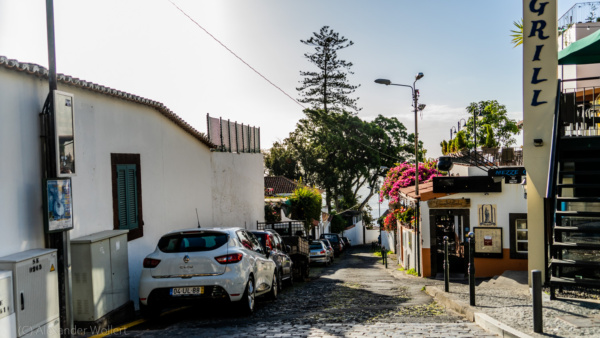
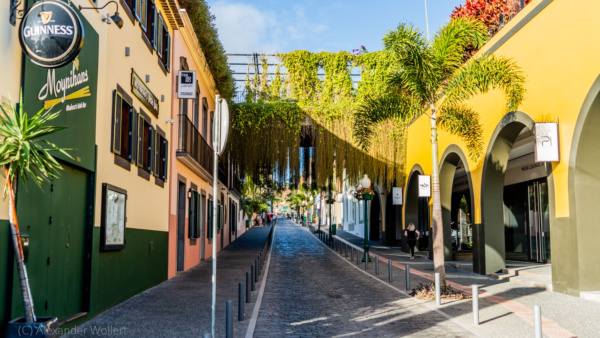
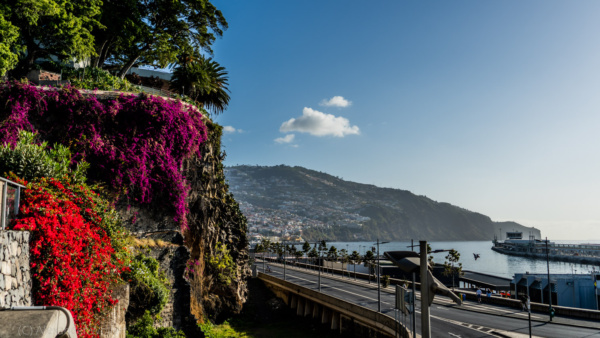
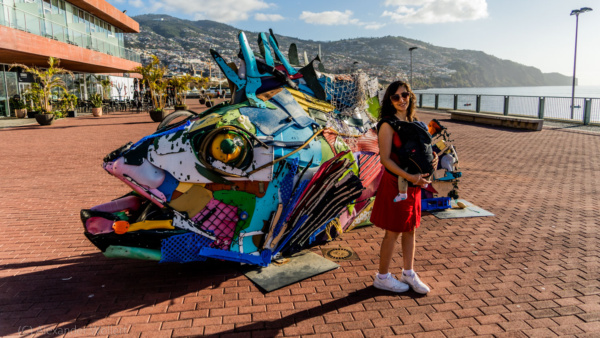
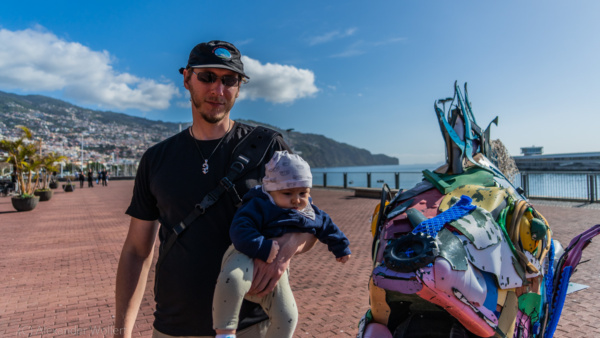
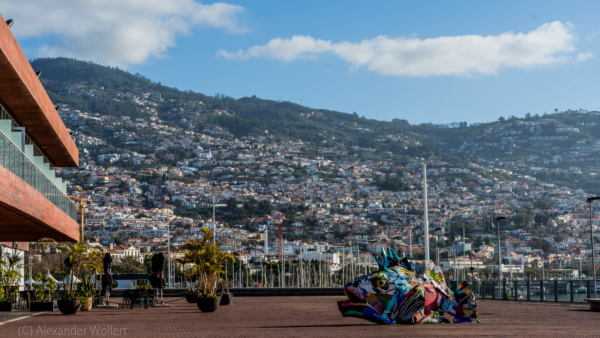
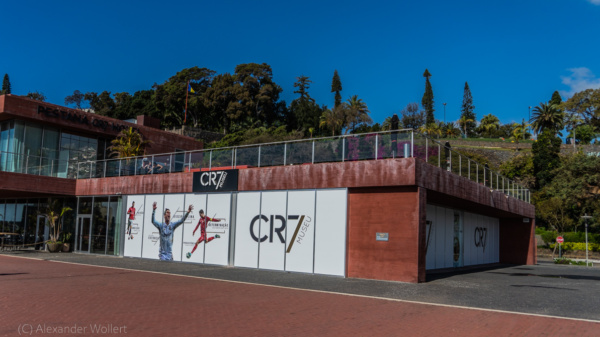

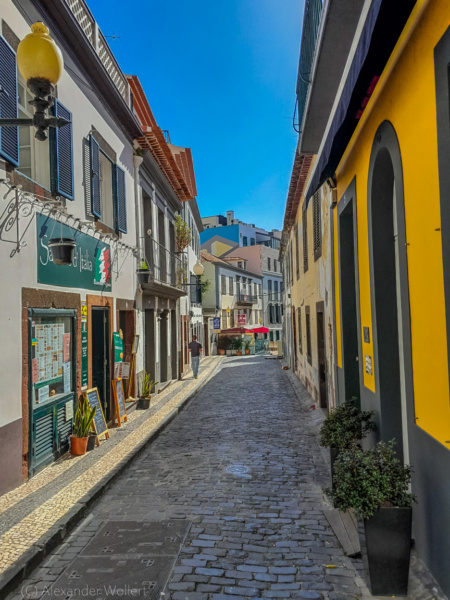

First of all, almost by accident, we walk over the feet of Christiano Ronaldo. Or at least his bronze statue with dubious aesthetics. The player’s face looks distorted into a grimace. Apparently the artist put more time into the detailed bulge in Christiano’s pants.
Behind him, his own museum attracts our attention, but since it is closed, unfortunately we can’t find out more about the life and qualities of the island’s greatest son.
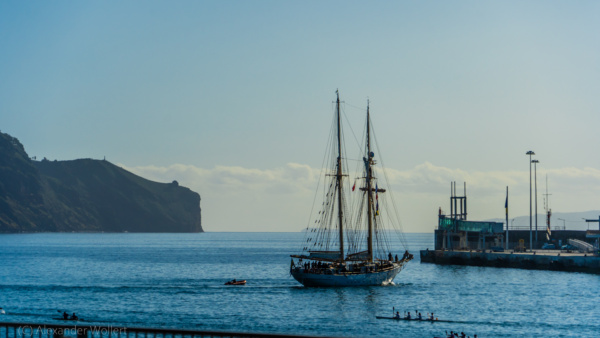
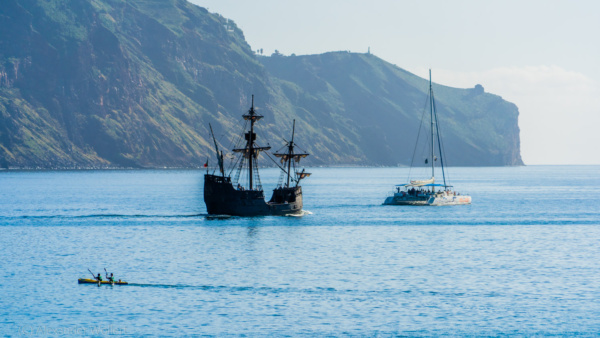
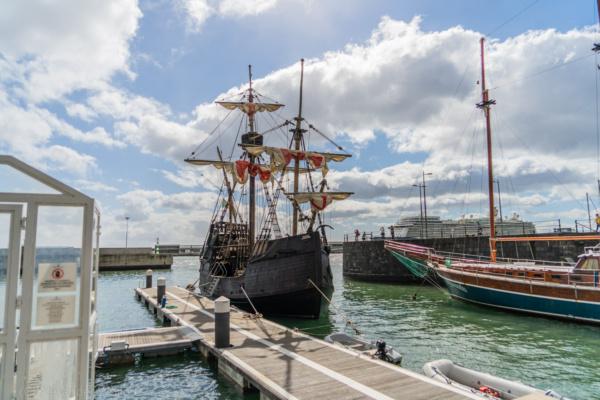
The Night hours
The weather has its whims. Some days it’s gale-force enough to lash the rain against our windows and make the palm trees flex disconcertingly outside. Then we have beautiful and sunny days again, followed by clear and warm nights.
A typical local product of the island is wine named after her. It tastes like the related port wine and cannot be distinguished from one another by my palate. But it suits Portugal and the warm nights.
While in the morning until 10 a.m. there is often no one to be seen on the streets apart from a few over-motivated joggers, the nightlife is flourishing. Both in the city center and in the Lido you can find music by groups in most bars. This goes from the one-man orchestra to bands with classic pop songs to classic fado. People stand in the streets and enjoy themselves. A beautiful sight and unfortunately something we cannot be a part of. Maybe next time.
Parque de Santa Catarina
On the way from Lido to the city, one automatically passes the Park of St. Catherine. This is spacious and laid out with great taste. Nevertheless, only a few people get lost here in the green.
The park is elevated and offers a great view over the harbor. The gardens resemble a botanical garden, at least most of the trees here are unknown to me.
Madeira is popular with cruise ships. On the first day the port is still free, but in the days that follow one mighty ship after another comes to the fore. The German “Mein Schiff” and the “Aida” with their tens of floors tower above the tallest houses near the shore.
Floating Towns. Leon has his own opinion on this. In the middle of the Parque de Santa Catarina with a view of the harbor we change his diapers on the short-cut lawn.
Downtown
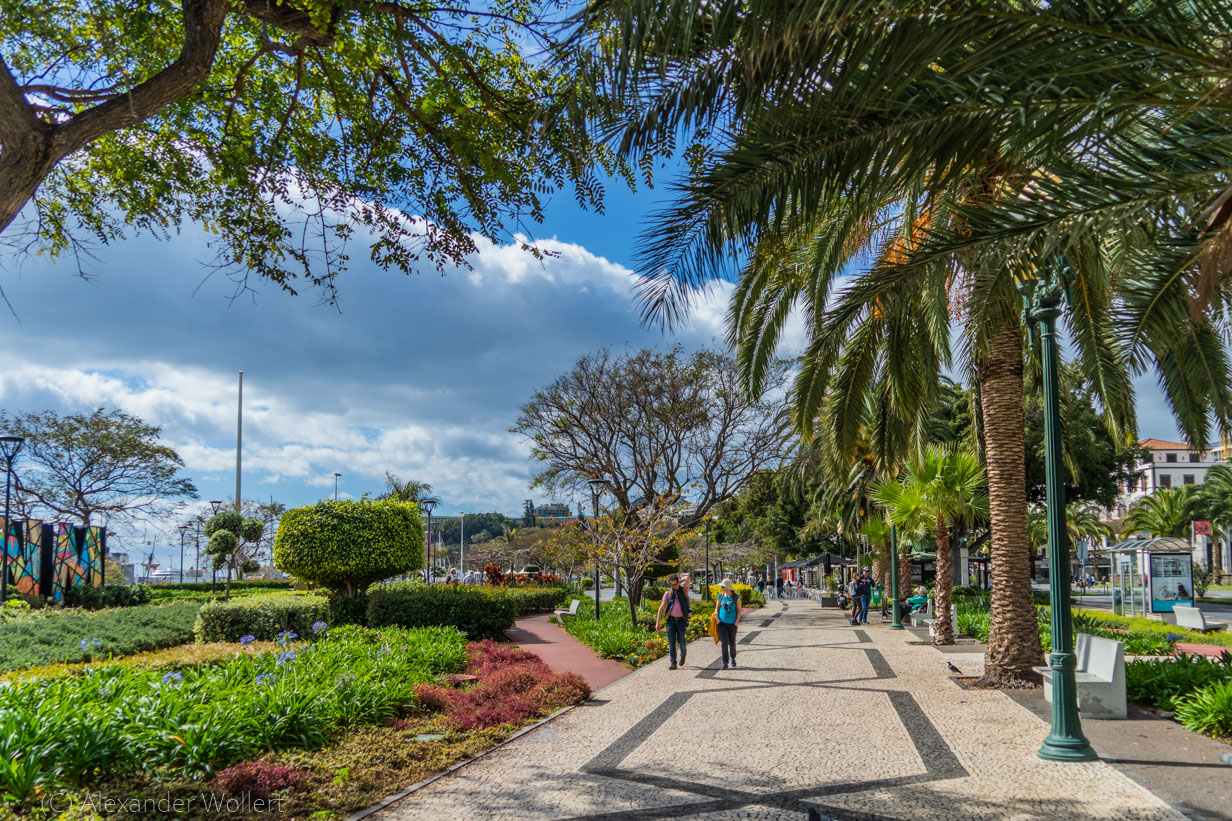
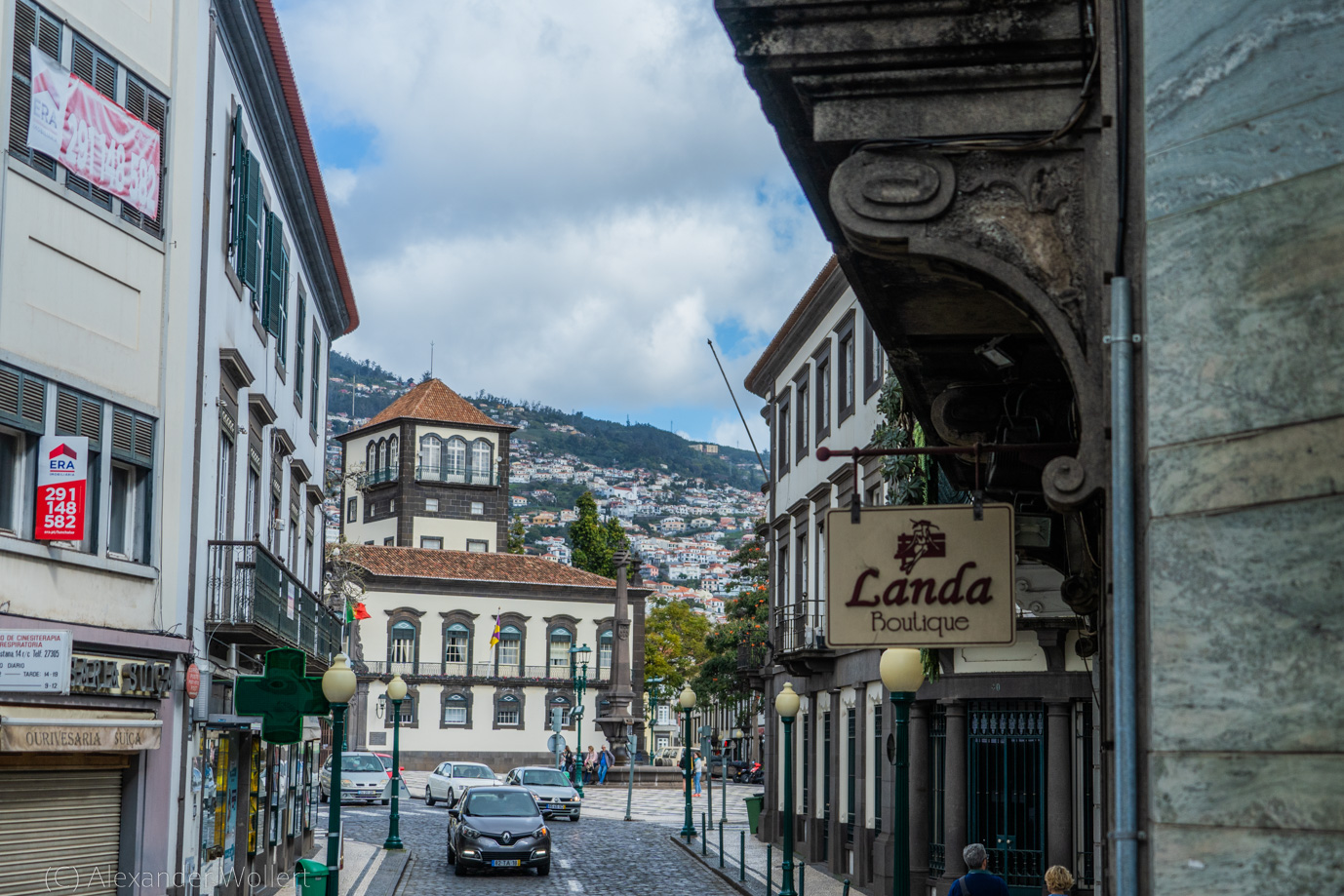
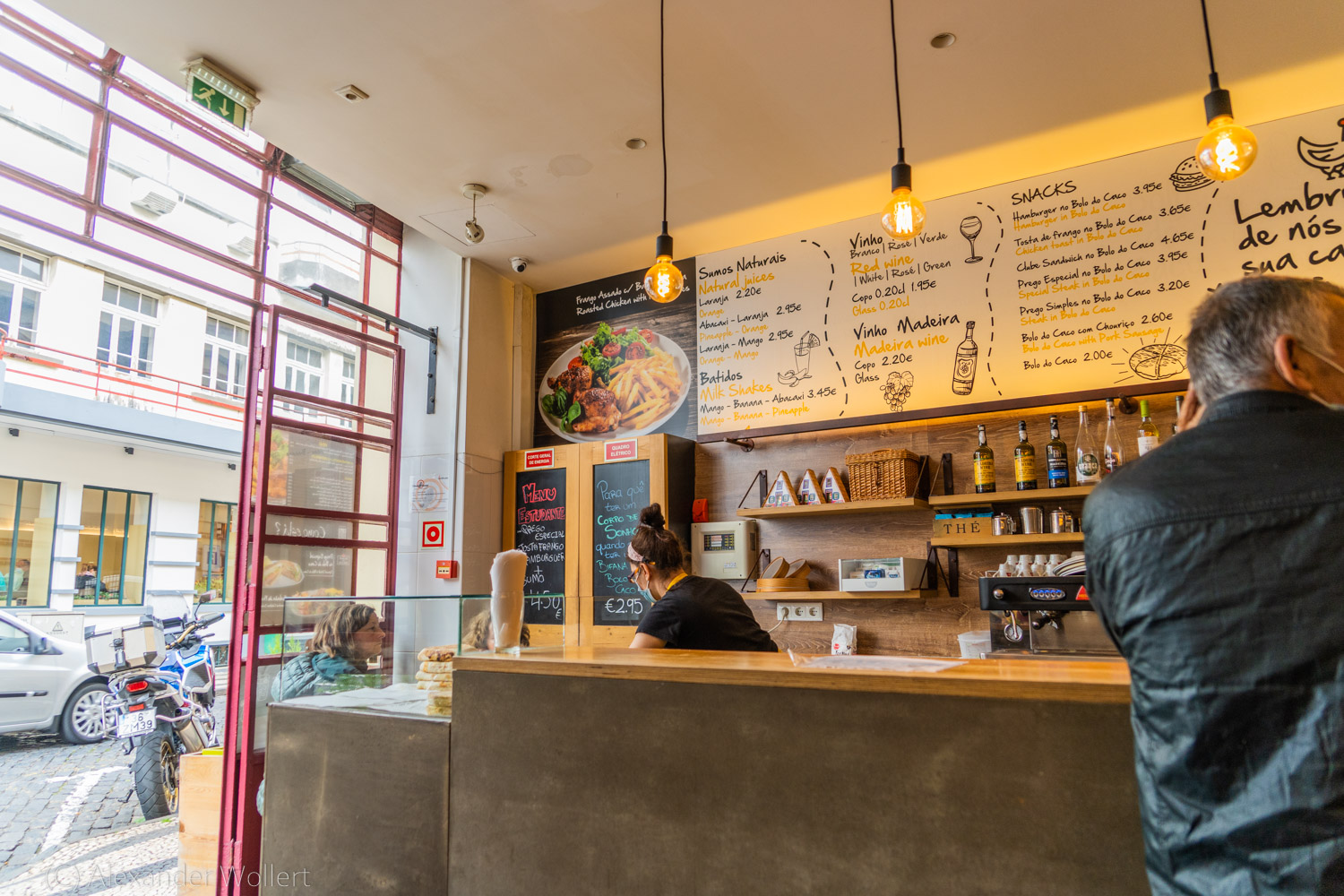
We explore the city and the beautiful Avenida Arriaga, an avenue of Jakaranda trees, in the center. The typical blue and white tiles also adorn the walls of the houses here, although not as much as in Lisbon.
Numerous cafes offer a break. A special challenge is now to find something that also has a way to change diapers.
mY DAILY WALKS WITH lEON

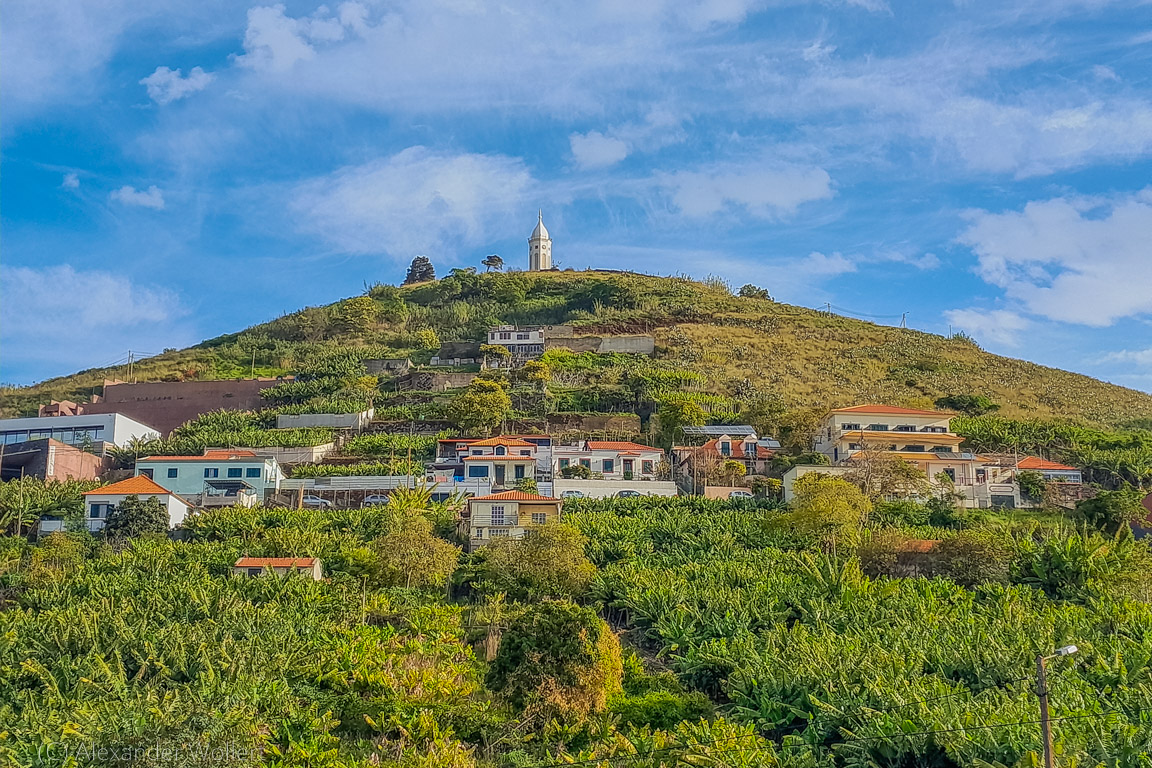

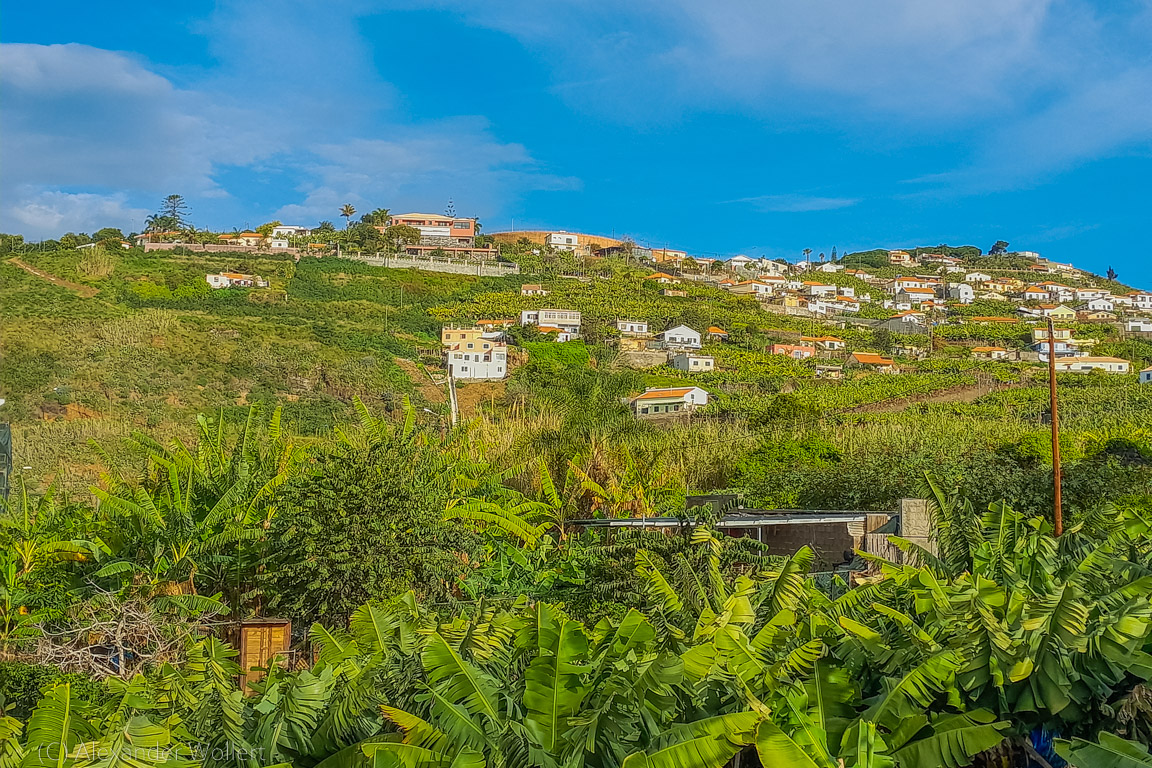
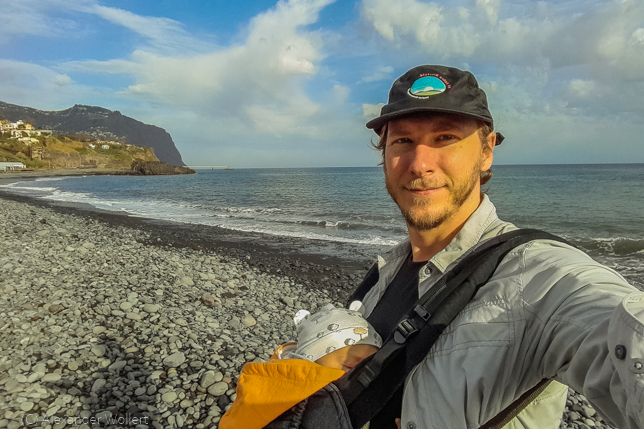

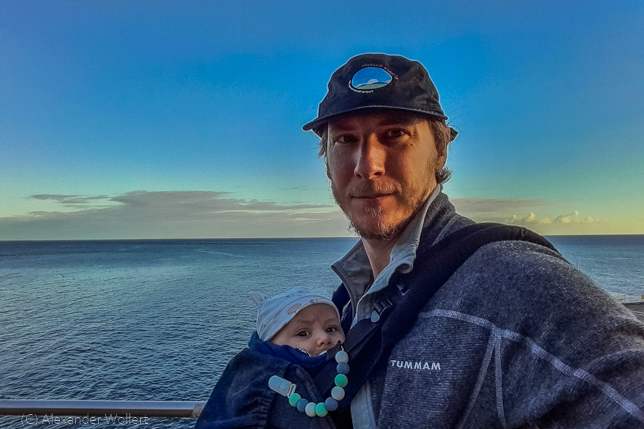



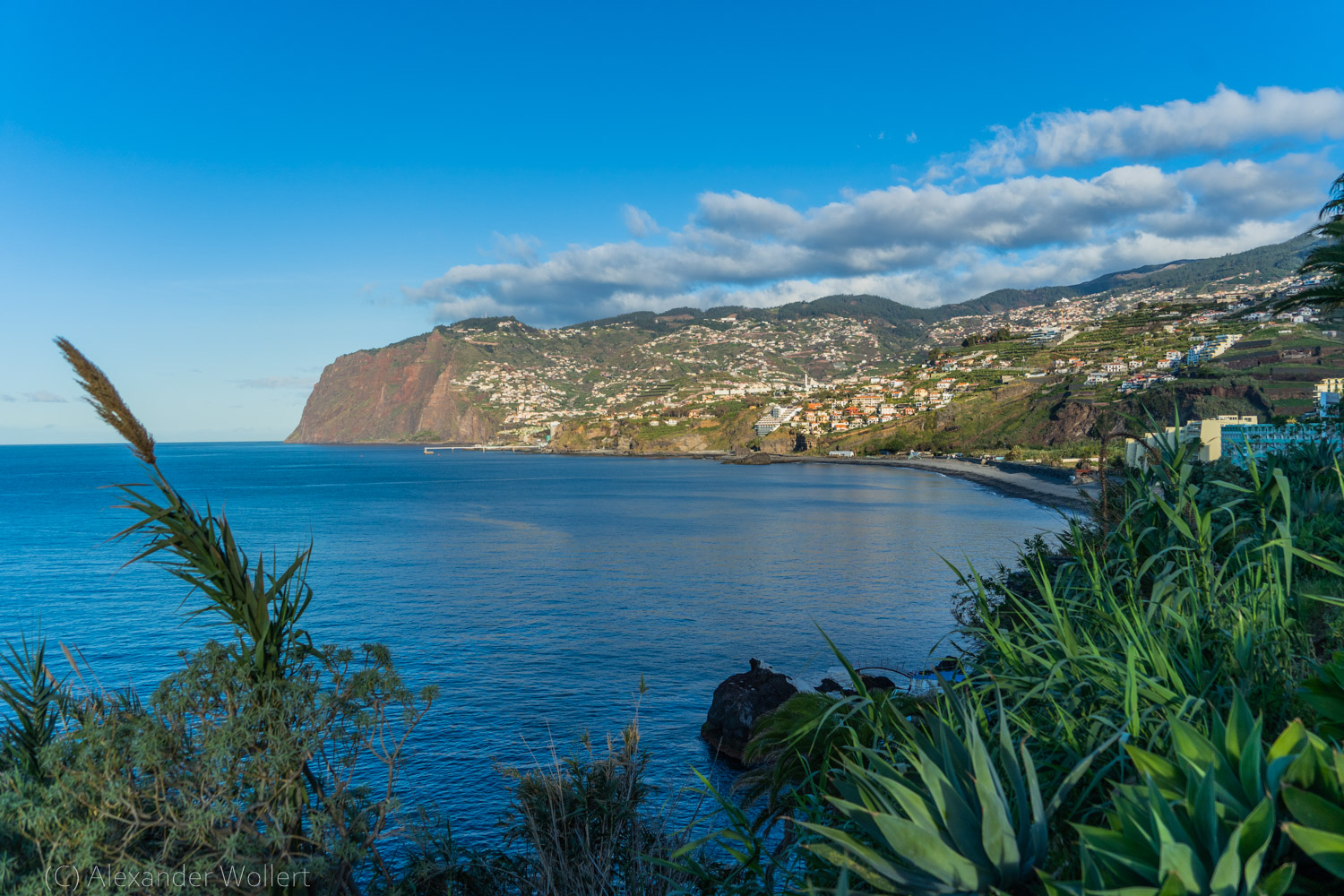
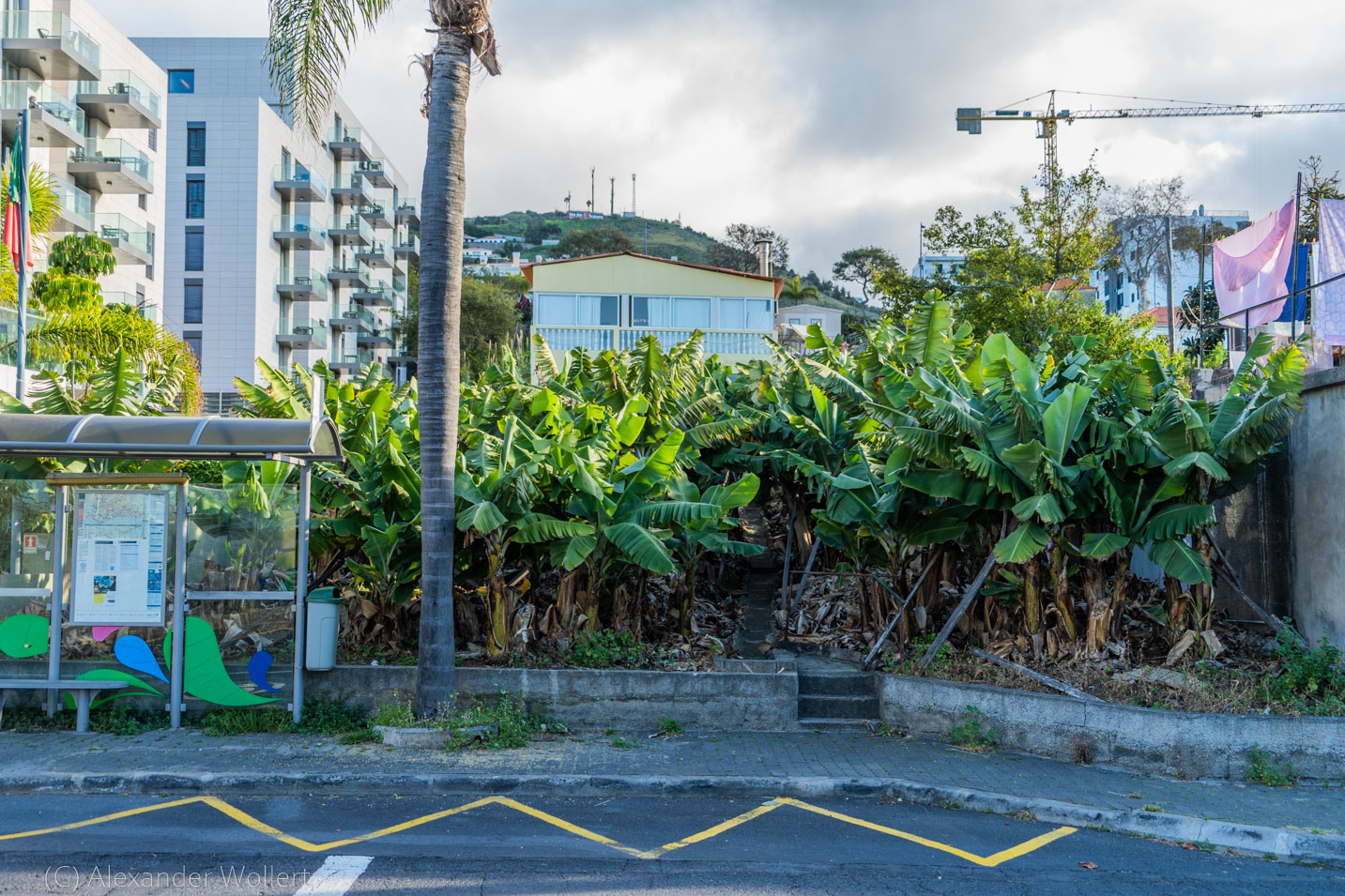
What you immediately notice about Madeira is how green the island is. The mountains are overgrown with trees and the city is kept green with parks and avenues. The city is typically Portuguese and gives the impression that the Alfama has been recreated on a tropical island. Because all the banana palms are dominant. In terraces around the city or fenced in gardens in the middle of the city we see banana trees everywhere.
But Leon is happy about the walks I take with him every day. Lido is right on the water and you can follow the coast. On a clear day you can see the uninhabited desert island on the horizon. On the other side of Madeira you can see Porto Santo Island, but not from Funchal.
Not far from our accommodation you will also find one of the “levadas” known for the island: small canals that meander through the island and irrigate the terraces with crops. Of course, these are mostly bananas. Sometimes you can also find a few alternative fruit trees, such as medlars.
The path climbs steeply up the mountain for twenty minutes until I reach the levada and can follow it. It goes behind the last rows of houses along through the plantations. I find a café and use a break for a bica. Leon doesn’t mind and continues to snore comfortably. I take the way back along the coast, where there is even a beach along a section. Big pebbles make walking difficult and no one ever seems to want to swim here. It’s the first time Leon sees the sea. At least he would see it if he wasn’t sleeping. A historic moment – overslept.
On the way back, an elderly gentleman from England congratulates me on my motivation to do so much with such a small child.
We will use the next few days even more. We will visit together the neighborhood of Monte on the mountain and its botanical gardens and the following days we will rent a car to drive inland and the west of the island. Alone I will embark on a breathtaking hike to Pico Ruivo.
fUNCHAL sTREET aRT
While walking around the city, we suddenly notice a collection of beautiful graffiti on the walls and doors. Artists have let off steam around the Rua de Santa Maria and given color to the old houses. In 2011, the Projecto artE pORtas abErtas started to make the rather dreary and avoided old town center more attractive.
This doesn’t just come from neglect. A year earlier, heavy rains caused a catastrophic flood in the city that killed 42 people and left part of the city center destroyed or uninhabitable.
Mercado dos Lavradores
On the streets and at the Mercado dos Lavradores fruit market, they offer the strangest fruits. In addition to bananas, plantains, mangoes, papayas and passion fruit in the most diverse variations, there are fruits that I have never seen before. There are the green pine cones that come from the rampant Monstera Deliciosa. This fruit of the plant, which looks just like the popular home and office plant, tastes like a cross between a pineapple and a banana.
On the display are the green guavas, which look like limes on the outside and little watermelons on the inside. Then there’s the Anona, which is also green and has a texture full of dents. The interior is white, slippery and full of black pips. You can spoon it all up.
Small red fruits resemble tomatoes and are called like tomatoes, but they are not: the tomate de árvore or “English tomatoes”. The fruits taste quite sweet.
Flowers are also offered in large numbers and underline the residents’ claim to call their homeland the flower island. The island itself really smells of fruits and flowers. Although we are right by the sea, the typical smell of salt and fish is missing.
Traditional Dinner WITH FADO
My parents are visiting us on the island for two weeks and my father’s milestone birthday is just behind us. As a gift, we go to a small but excellent place called Casa Portuguesa and have a good time there. Local red wine and of course Madeira wine are served alongside an excellent menu consisting of a starter of bread, cheese and vegetables, a main course of fish and an excellent saballion for dessert.
Last but not least, three elderly gentlemen enter the restaurant. While two men play a classical and a traditional guitar, a stout lady performs a fado, heavy with Portuguese red wine.
It’s a good end because our time in Madeira has come to an end. The island will remain in our memories.

